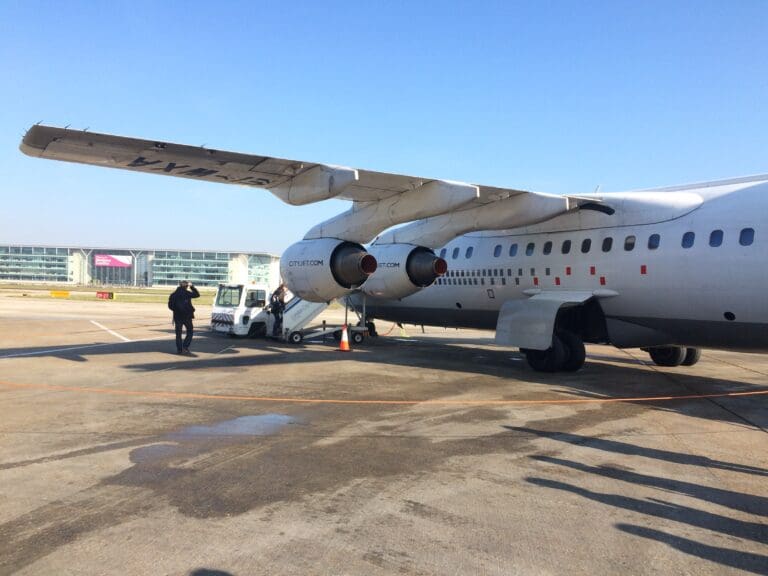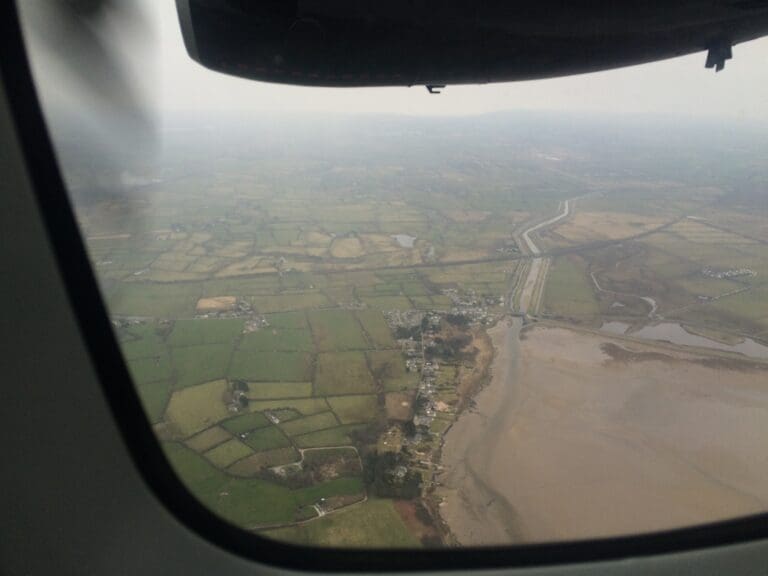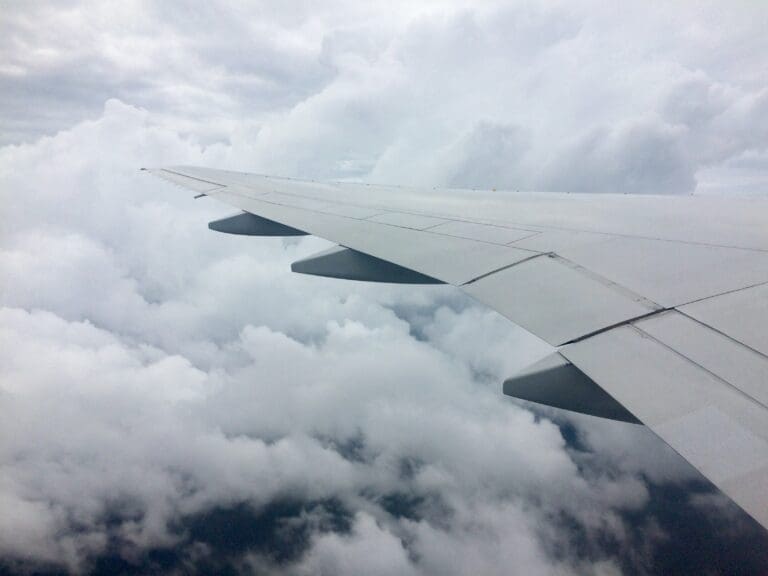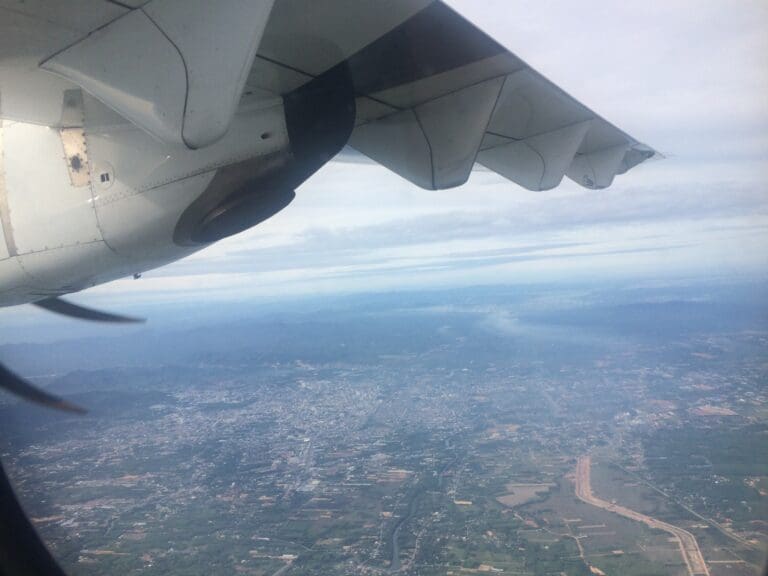Not Quite the ME3: London to Bangkok via Muscat with Oman Air
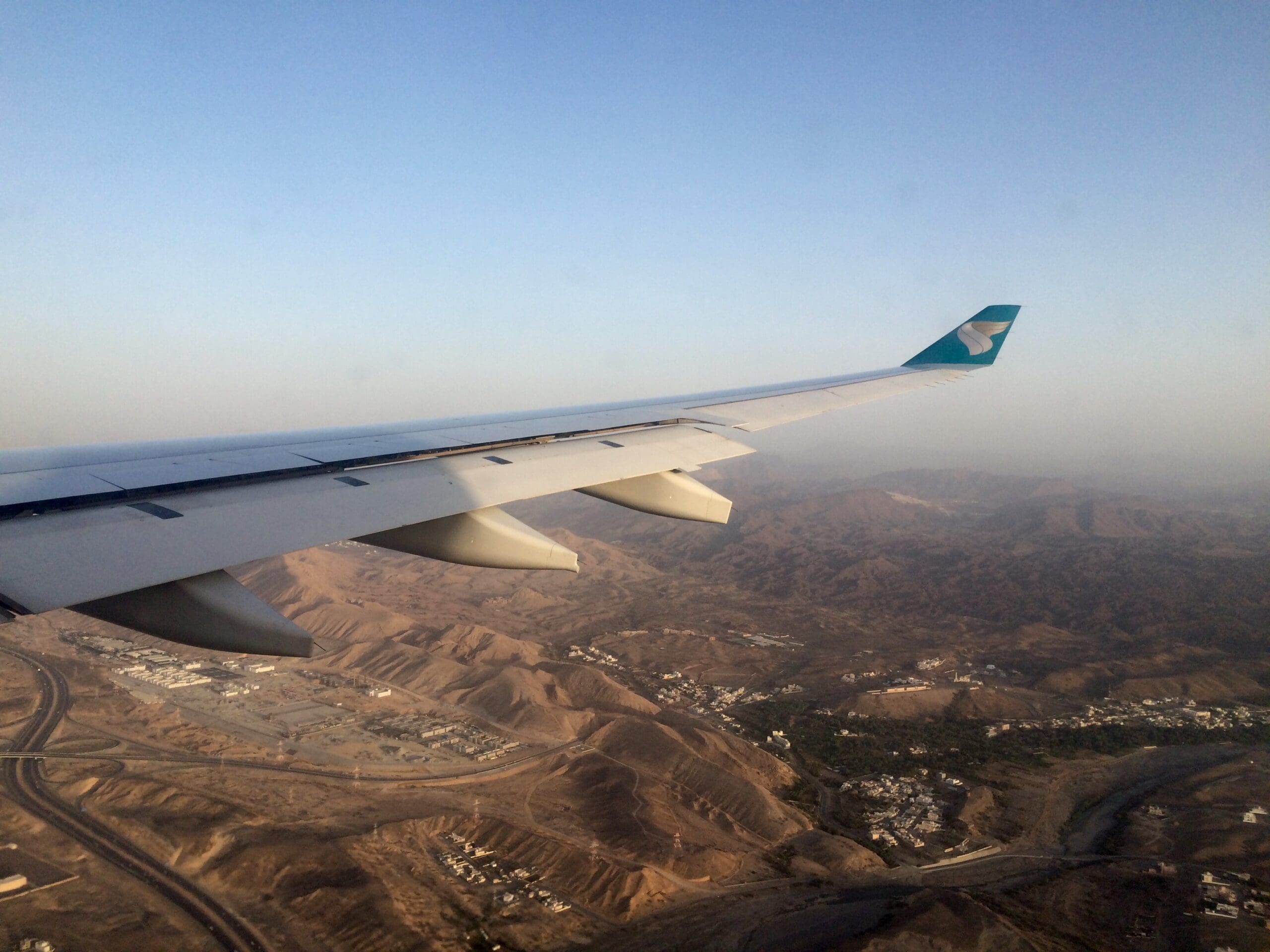
Background
My first year of university in London had come to an end, and, having saved up throughout the year (not a particularly easy task in one of the world’s most expensive capitals!), I decided to head off on a backpacking trip around East and Southeast Asia. Like all good backpackers, my first stop would be Bangkok and with several months to go until I embarked on my adventure, I trawled the internet looking for the cheapest options to escape London. Of the many direct and one-stop options, I found Oman Air to offer the cheapest itineraries (unless I fancied hopping down via Turkey, the UAE and India on multiple LCCs). Not only this, but the journey times were fairly good, enabling me to leave London Heathrow at 0825 and arrive in Bangkok at 0620 the following day, with a connection time of just under two hours in Muscat.
From an aviation enthusiast’s standpoint, this would enable me to try a range of aircraft and excitingly, the return journey would see me fly from Bangkok to Muscat via Karachi on a Thai Airways Airbus A330 for no extra cost. Other than this, the sectors between the UK and Oman would be operated by Oman Air Airbus A330-300s, whilst the outbound flight from Muscat to Bangkok was assigned to one of the carrier’s Boeing 787-8 Dreamliners that had been dry-leased from Kenya Airways.
Whilst I usually prefer to book directly with airlines, with tickets sold on Opodo at a significantly cheaper rate, I decided to book with them. This ended up being a quick and painless process and soon I was all set to head off to Thailand. Unsurprisingly given their status as a major airline, Oman Air provides online check-in services for most of their flights, with passengers allowed to check-in up to 48 hours prior to the scheduled departure time of the first flight in their itinerary. Once I had found my booking reference, this was an easy process and I was able to move my pre-assigned seat to window seats for both sectors without making any additional payment.
The Journey
Getting from Central London to Heathrow, is typically not a particularly difficult task, with the London Underground’s Piccadilly Line slowly trundling westwards towards the airport, the fast yet expensive Heathrow Express and the slower stopper Heathrow Connect which runs on the mainline and makes this journey in around half the time of the Tube. With all things considered, I decided to take the Heathrow Connect from Paddington Station which would hopefully get me to Terminal 4 in good time for my morning flight.
After an early morning Uber ride across the city centre, I arrived in good time for the first Heathrow bound train of the morning and after tapping in, I found myself on a fairly empty Class 360 electrical multiple unit. Right on time, the train pulled out of Paddington, leaving behind the rows of venerable High Speed Trains waiting to sling people across to South Wales and the West Country. As quickly as we gained speed, we found ourselves slowing down as we approached the first stop of the journey, Acton Main Line station. There, a fair number of airport workers made their way onto the train, with this pattern being repeated at the subsequent stops of Ealing Broadway, South Ealing, Southall and Hayes & Harlington. With each stop, the train waited longer at the platform although the driver kept passengers updated and advised that this was due to the combination of overrunning engineering works and the activation of the fire alarm at Heathrow Terminal 4 Station. The latter meant that the train would terminate at Heathrow Central. Whilst not ideal, this was no great hurdle and instead I ended up making the final sprint under Heathrow’s southerly runway by Heathrow Express.
Arriving around forty minutes behind schedule yet still with plenty of time to go before departure, I made the long journey up from the station to Terminal 4’s check-in hall. With plenty of flights heading off to destinations across the world, this was understandably busy although I was delighted to find that Oman Air’s well-branded check-in desks were for the most part devoid of passengers. As soon as I arrived, I was greeted by a delightfully friendly and helpful check-in agent who confirmed that I was happy with the seats that I had selected before tagging my backpack and sending this into the depths of the airport. Given the overall busyness of the landside area, I was a little surprised to find that security was comparatively quiet and so I was able to breeze through this within around three minutes and therefore left with no complaints about my experience passing through Terminal 4 that morning.
Once airside, Terminal 4 consists of a long rectangular hall, with another pier branching off this. Inside, this isn’t the most modern or amazing of terminal buildings, yet it is functional and was fairly clean, ultimately leaving me with little to make a valid complaint about. Furthermore, not only can airside views be had from many of the terminal’s gates, atop of the terminal sits a small viewing area that allows for a superb view of the southerly runway and beyond. That morning, plenty of aircraft could be seen at the terminal’s stands. These included gigantic Airbus A380s from the likes of Etihad Airways and Malaysia Airlines, two Boeing 787-8 Dreamliners – one from Aeromexico and another from Royal Brunei Airlines, Boeing 777-300ERs from Jet Airways and Saudia, a Gulf Air Airbus A330-200, a KLM Boeing 737-800, a Delta Air Lines Boeing 757-200 and finally three Airbus A320s from Air France which were presumably parked up for extended turnarounds as a result of that day’s pilot strike.
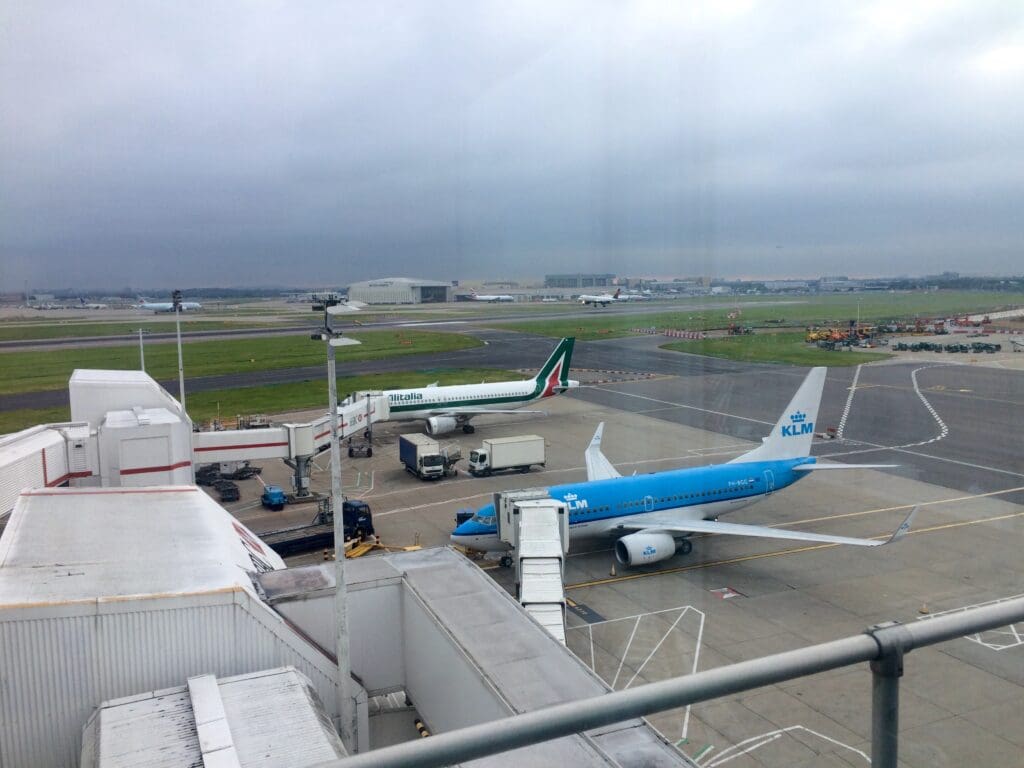

Following a wander around, not wanting to make any purchases from the terminal’s selection of overpriced shops and eateries, I plonked myself down at Gate 2. Outside at Stand 402, the Oman Air Airbus A330 that would be operating the morning Muscat service could be seen being readied for its departure, with a seemingly endless stream of cargo being loaded up into the hold and fuel being pumped into the wings. That morning, this aircraft came in the form of Airbus A330-343 A4O-DE. Assembled at Airbus’ Toulouse Blagnac plant, this jet first rocketed upwards into the French skies in February 2010 with the test registration F-WWYM and carries the serial number 1093. This made the aircraft over six years old at the time of my flight and was thus still a relatively young airframe. Inside, the aircraft is configured in a relatively low-density layout, being home to a grand total of just 230 seats spread across three classes (6 in First, 20 in Business and 204 in Economy).
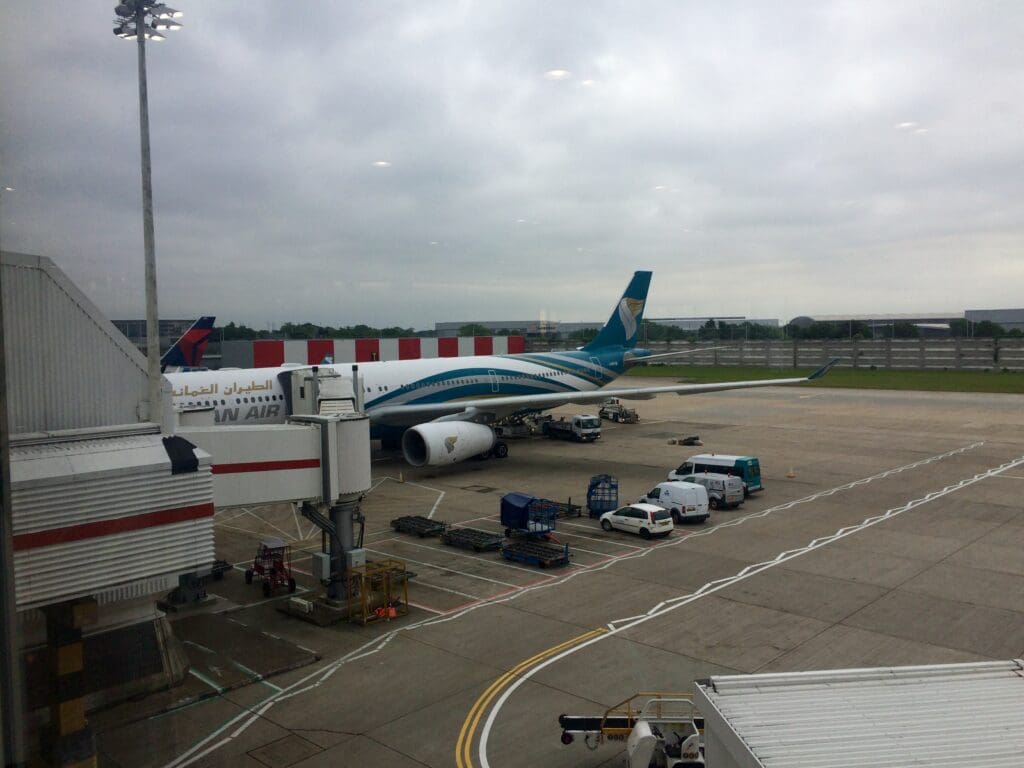
As time passed, more and more passengers appeared and soon the area around the gate became fairly busy. That morning, boarding began on time fifty minutes prior to departure. Once those requiring assistance and premium passengers had boarded, I made my way down the jetbridge and soon found myself nearing the Airbus A330. As soon as I stepped into the galley that separates the two Business cabins, I received two very warm and friendly welcomes and my boarding pass was checked before being pointed down the second aisle.
Turning right, I entered the larger of the Airbus’ two Business class cabins. This featured a grand total of twelve lie flat seats in a 1-2-1 layout. Whilst these were undeniably spacious, they did seem to lack the privacy offered by those of many other airlines. That said, I would not have complained about ending up in one of these for the journey to Oman! Following a quick journey through this small cabin, I arrived in the forward Economy section and received another friendly greeting from one of the army of flight attendants onboard the aircraft. Onboard, each seat was covered in a colourful fabric cover with repeating horizontal stripes of green and gold, and topped with a comfortable adjustable headrest that was sported a fabric antimacassar. On each seat, a blanket and pillow could be found, although both were very much of typical quality and thus nothing to write home about.
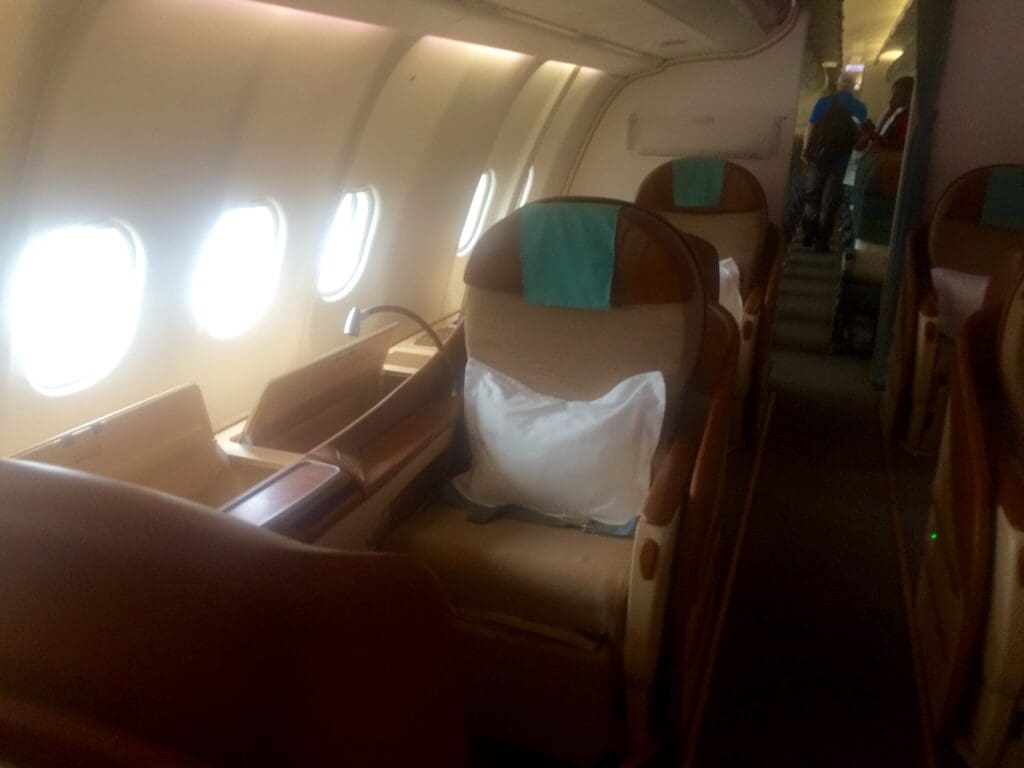
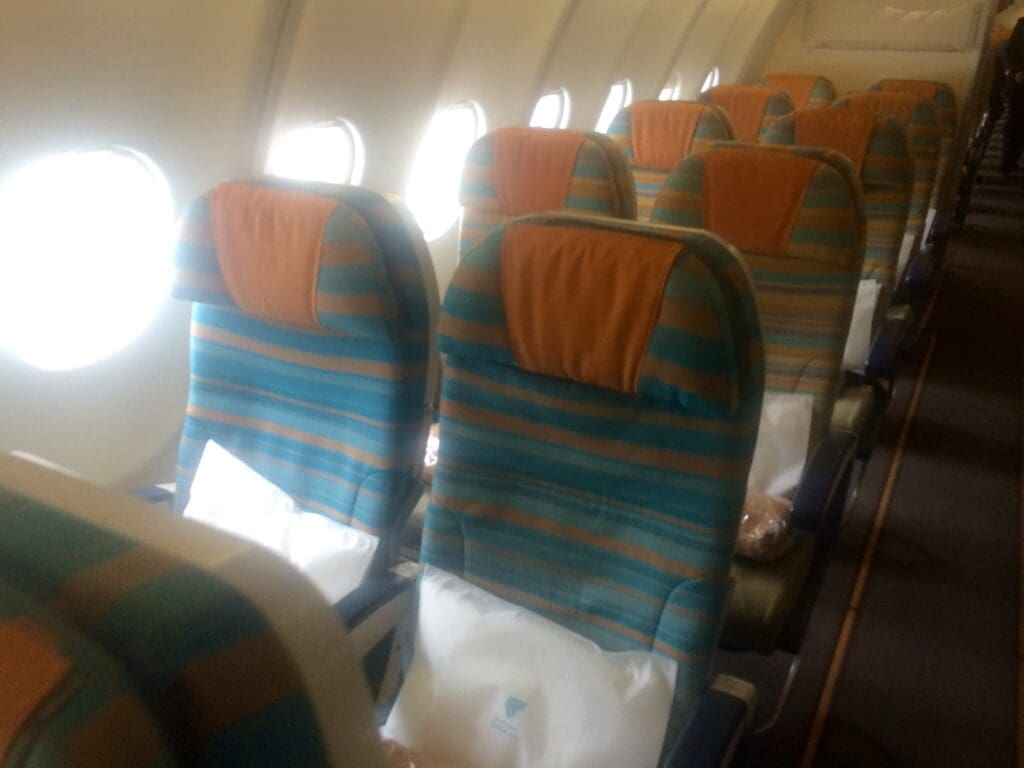
After trundling through the forward Economy cabin and receiving multiple greetings from each crew member that I passed, I soon arrived at my seat in the rearmost cabin and settled in for the journey to the Middle East. Starting with the positives, once seated, I found the seat to be comfortable and spacious, leaving me with little to complain about in this respect. Entertainment was provided in the form of the 8.9 inch touchscreen inflight entertainment screen, and whilst a plug socket and USB port were offered, the former did not work and the latter failed to charge my phone and instead simply sustained its battery for the duration of the flight. Meanwhile, the usual safety card and sickbag could be found in the seatback pocket along with a copy of Oman Air’s Wings of Oman inflight magazine and an inflight entertainment guide for the month. Moving on, looking around the seat seemed to be in need of a deep clean and I was a little disappointed to find that there was a fair amount of well-ingrained dirt visible around my seat as well as some marks and scratches.
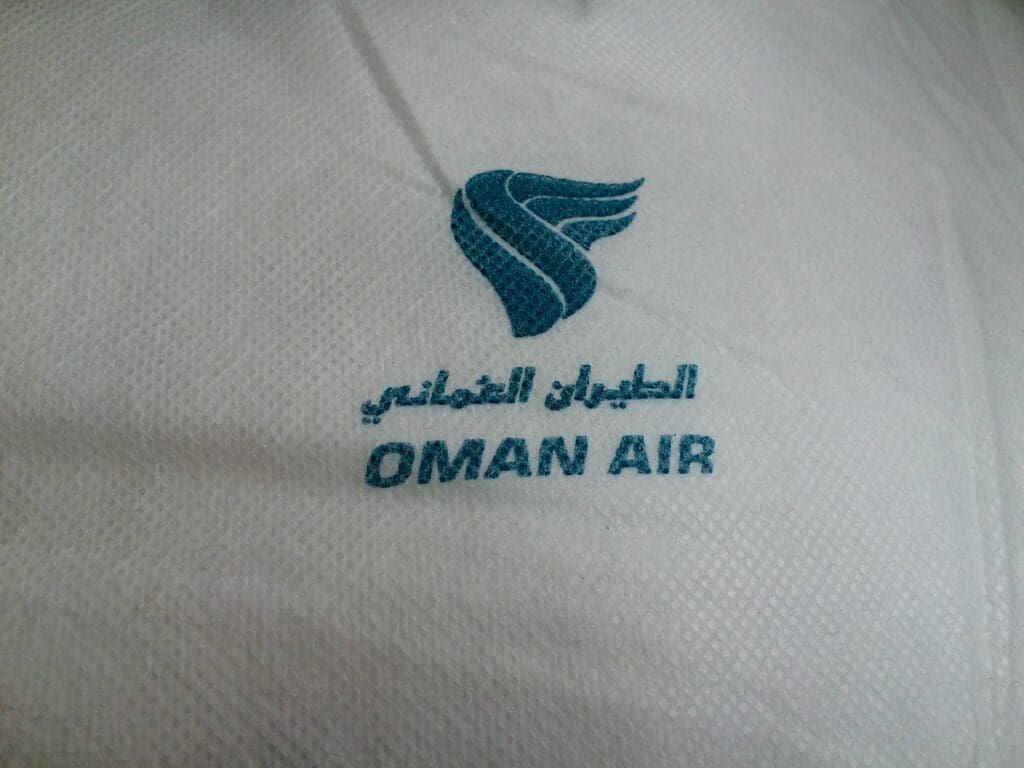
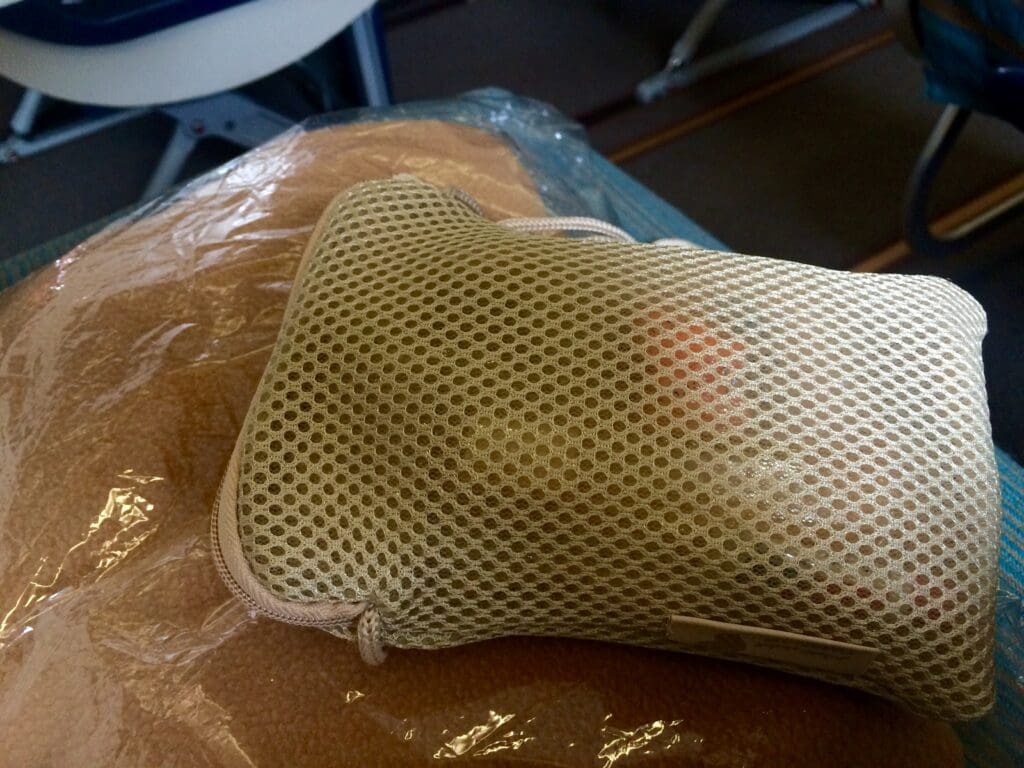
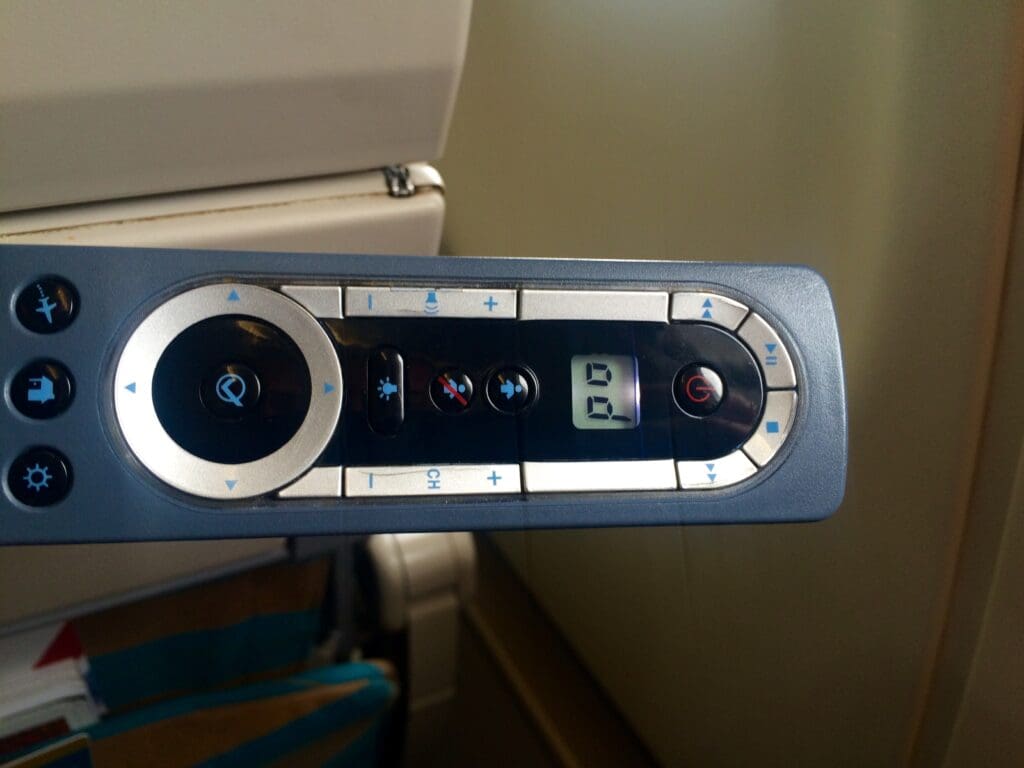
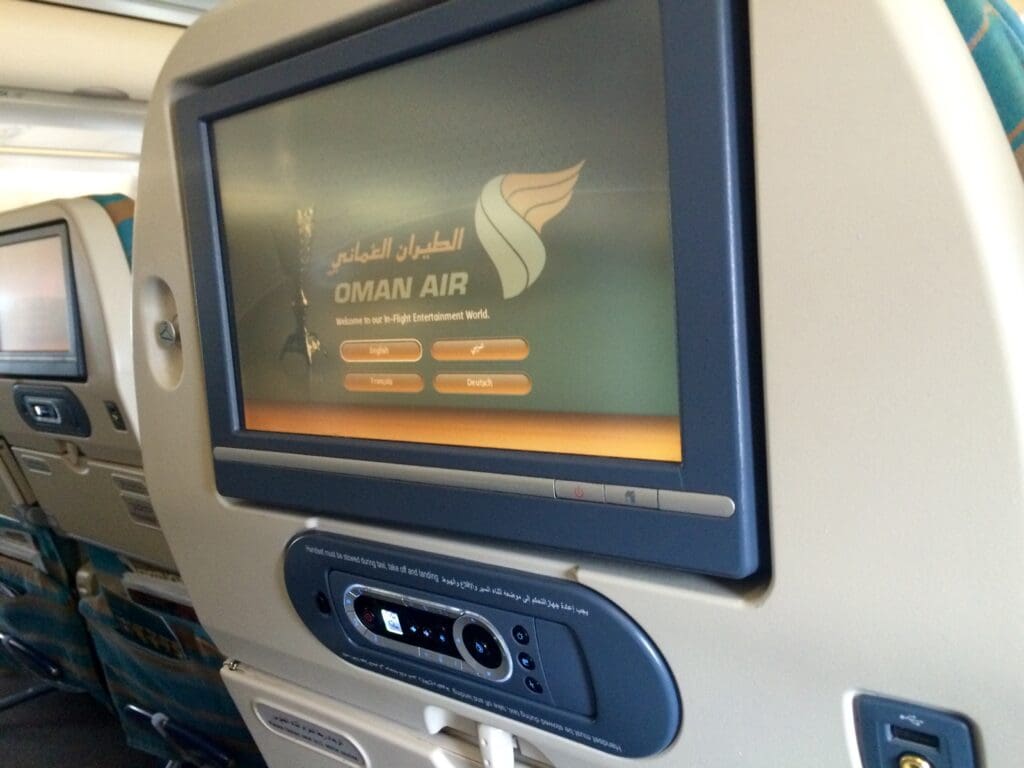
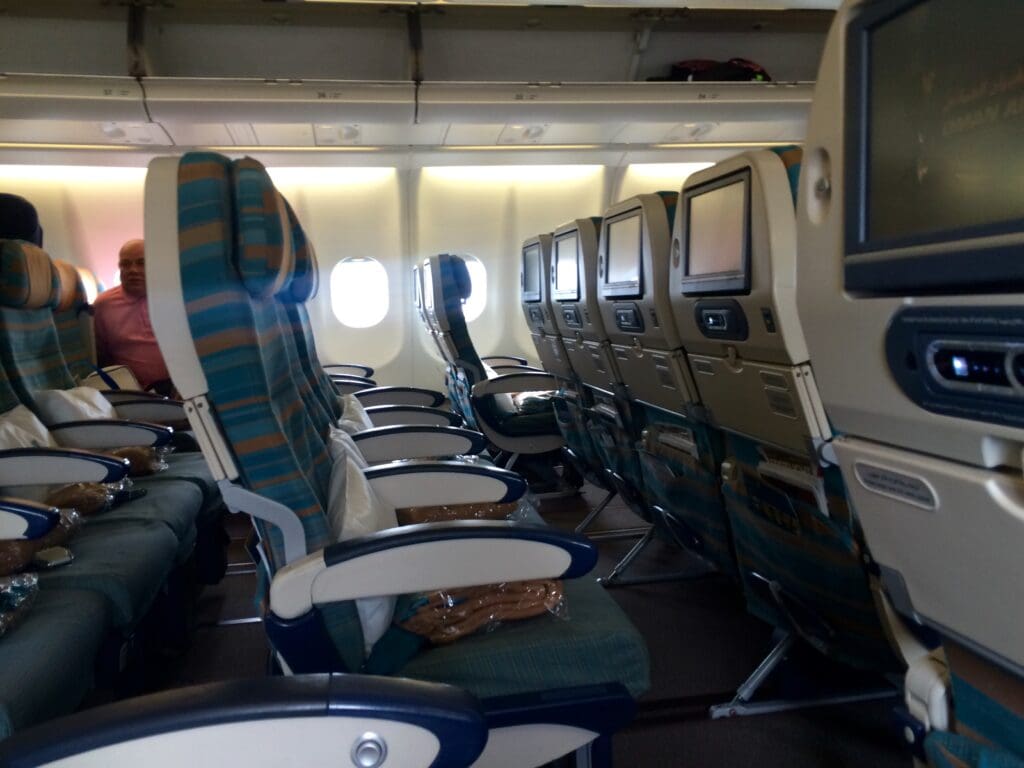
That morning, passengers streamed onto the cabin at a fair rate and it wasn’t long before the final passenger had boarded the aircraft. Fortunately, the flight was far from full and I thus enjoyed the luxury of a vacant neighbouring seat, allowing me to spread out a little. Looking around, it seemed that many passengers were like me, bound for Bangkok, whilst others were heading onwards to Dubai and destinations across South Asia. As soon as boarding was announced as complete, the cabin crew passed through the cabin handing out amenity kits, which were a nice touch given their increasing rarity and the fact that I was on a daytime flight. Opening this up, I found it to contain eyeshades, socks and a toothbrush-toothpaste combo pack.
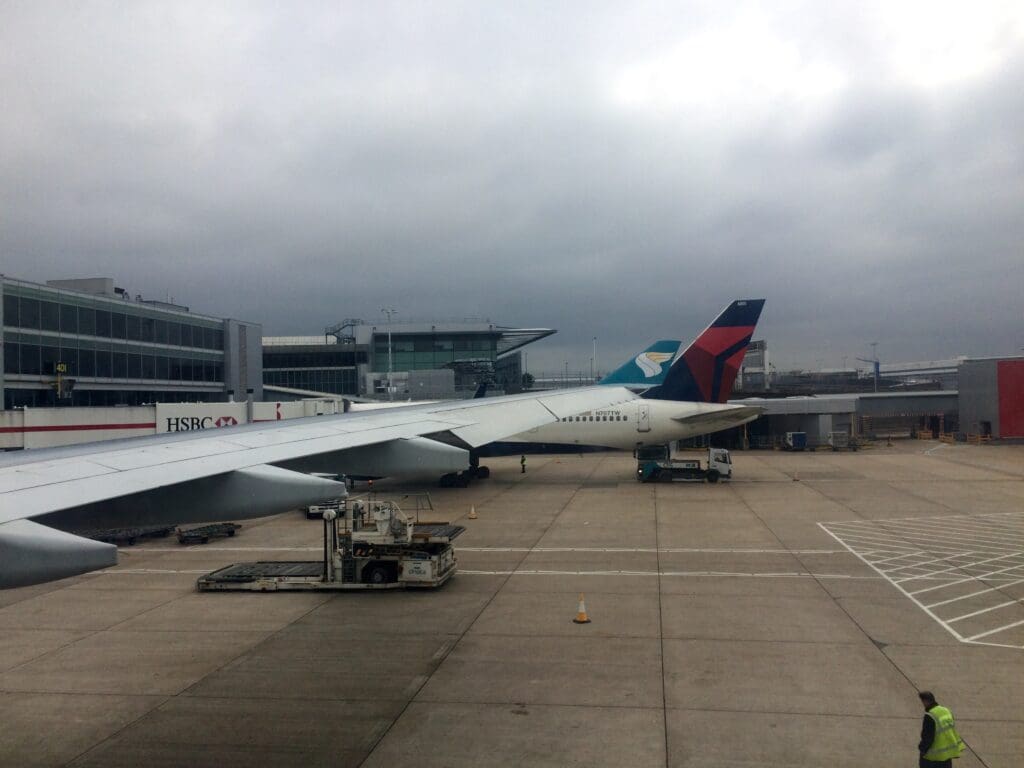
With ten minutes to go until our scheduled departure time, at 0815 the Airbus was pushed back away from its stand at which point the calming boarding music came to an end and the safety video took over the seatback screens. This was played first in Arabic and then again in English, and consisted of an animated and relatively unremarkable demonstration with no gimmicks yet serving its important purpose. As this was broadcast, the Airbus’ two ‘hairdryer’ Rolls-Royce Trent 772B-60 engines powered into life, temporarily resulting in a fair amount of vibration and the scent of jet fuel to fill the cabin. By the time the safety video had reached its end, the tug had been disconnected and the aircraft began its short taxi over to the end of Runway 27L whilst inside the crew passed through the cabin ensuring that all was secure and in place for our departure.
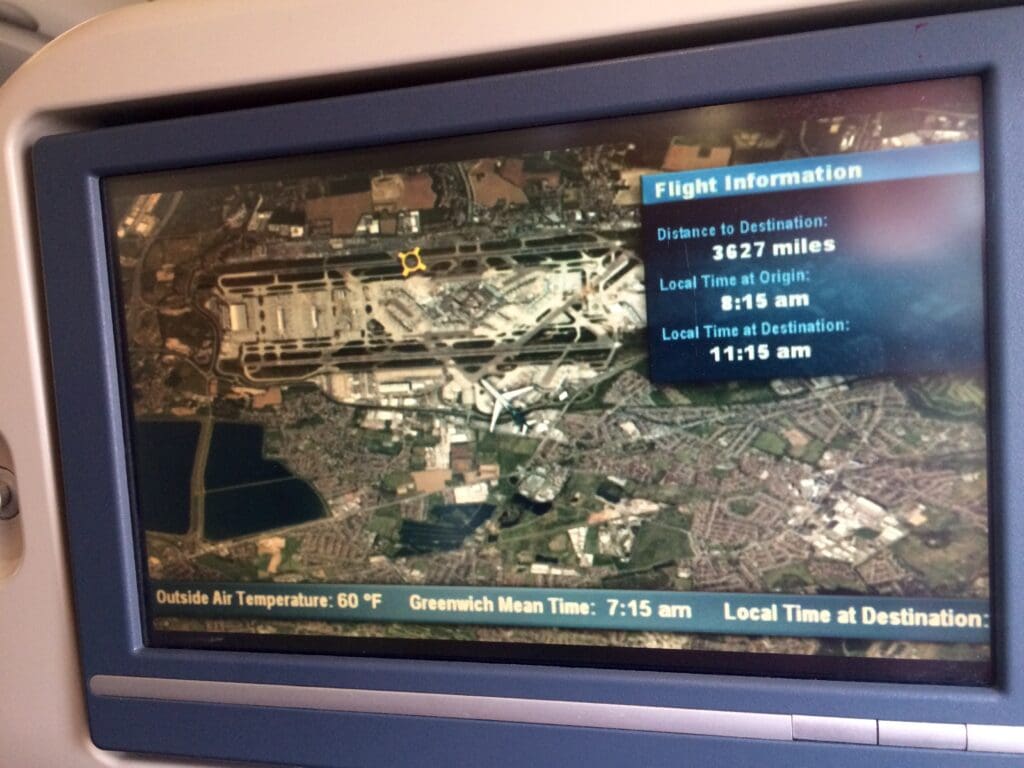

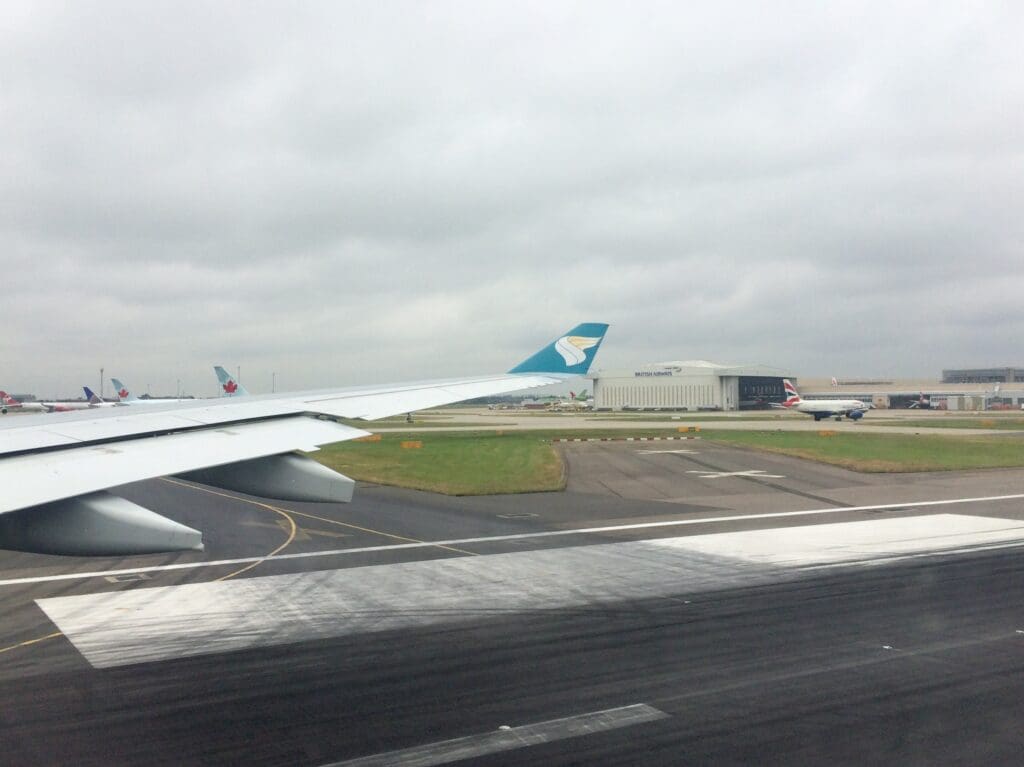
Despite the short taxi over to the end of the runway, in true Heathrow style around ten minutes of waiting was required to enable other aircraft to depart. As we waited, I tuned into the nose gear camera, which I thought was a nice touch and a little unexpected from this Airbus A330. During our wait, the captain performed their welcome speech in Arabic and English which consisted of the usual welcomes and thanks before giving a comprehensive brief of our route to Oman, and the weather in Muscat. That day, the aircraft would depart into the west before turning around and flying over the southern fringes of London, followed by a hop across the sea to Belgium, after which we would traverse the skies of Germany, Austria, Hungary and Romania. Crossing the Black Sea in the early afternoon, we would then fly over Turkey and down over Iran before making our way over the Persian Gulf and crossing the shores of the United Arab Emirates above Sharjah, a short time later heading into Oman’s airspace and commencing our descent.
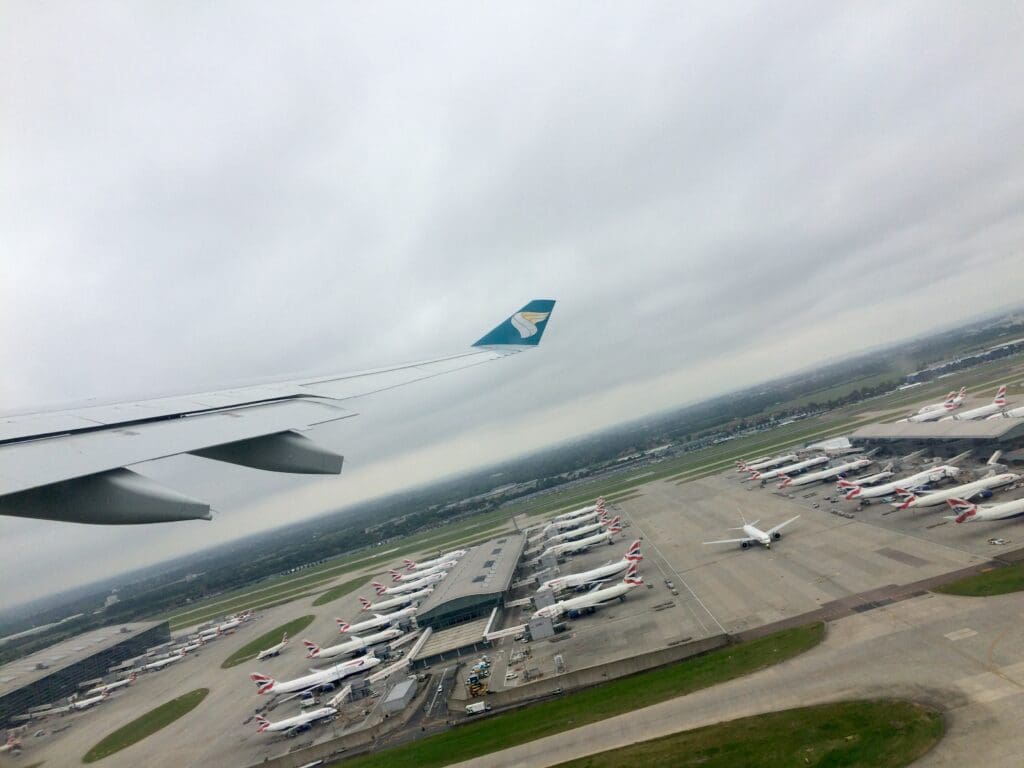
Following our wait, at 0837, the Airbus slowly lumbered onto the runway and once there the two engines spooled into life as we performed a rolling takeoff. Speeding down the runway, the aircraft accelerated past the masses of jets at Terminals 2 and 3, before rotating skywards roughly parallel with the airport’s tall control tower. As we climbed, the gear was retracted and a superb view of the rows and rows of British Airways jets at Terminal 5 could be seen before leaving the airport behind and continuing out over Berkshire’s green landscape.
Soon, the aircraft banked and flew roughly anticlockwise around the busy M25 motorway that loops around London before we climbed into the cloudy skies. After departure, the Cabin Services Manager made an announcement in which they introduced themselves and noted that the crew onboard could speak Arabic, English, Hindi, Polish, Romanian, Tagalog and Thai. This was then followed by the usual warning regarding seatbelts fastened whilst seated. Upon passing through the clouds, I decided to explore Oman Air’s inflight entertainment system. Whilst not the most modern or sleek of systems, content-wise, this was fairly reasonable. Admittedly, this did lack the same massive array of content as on say the ME3 giants, however, this was adequate given the length of the flight and I have encountered far worse inflight entertainment systems.
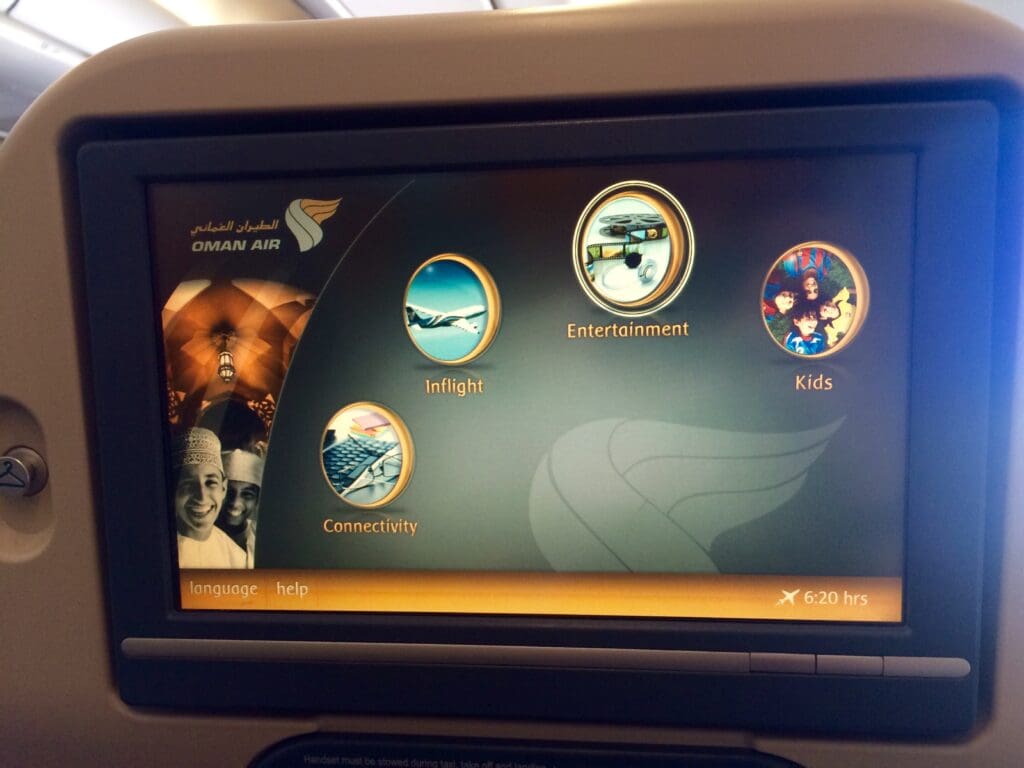
Around forty minutes after taking to the skies and whilst somewhere high above Belgium, the cabin crew undertook the first round of service. This consisted of a pre-breakfast drink and an appetiser. Deciding on an orange juice, this was handed to me in a plastic cup accompanied by a serviette and an Oman Air branded packet of Desi Munch, a spicy potato based snack. Around twenty minutes later, the main meal service began, during which passengers were offered the choice of crepes or a herb omelette accompanied by spinach and potatoes. Opting for the latter, this was handed over to me and came with a bread roll and butter, plain yoghurt, a 250ml bottle of Tropicana orange juice, a tub of water and a small fruit salad. Overall, this was a fairly good meal, being of decent quantity and quality. My only complaint was that eating utensils came in the form of cheap and flimsy plastic cutlery. Around thirty minutes after this meal had been handed out, the crew made their way through the cabin collecting rubbish and handing out bottles of Oman Air branded still water.

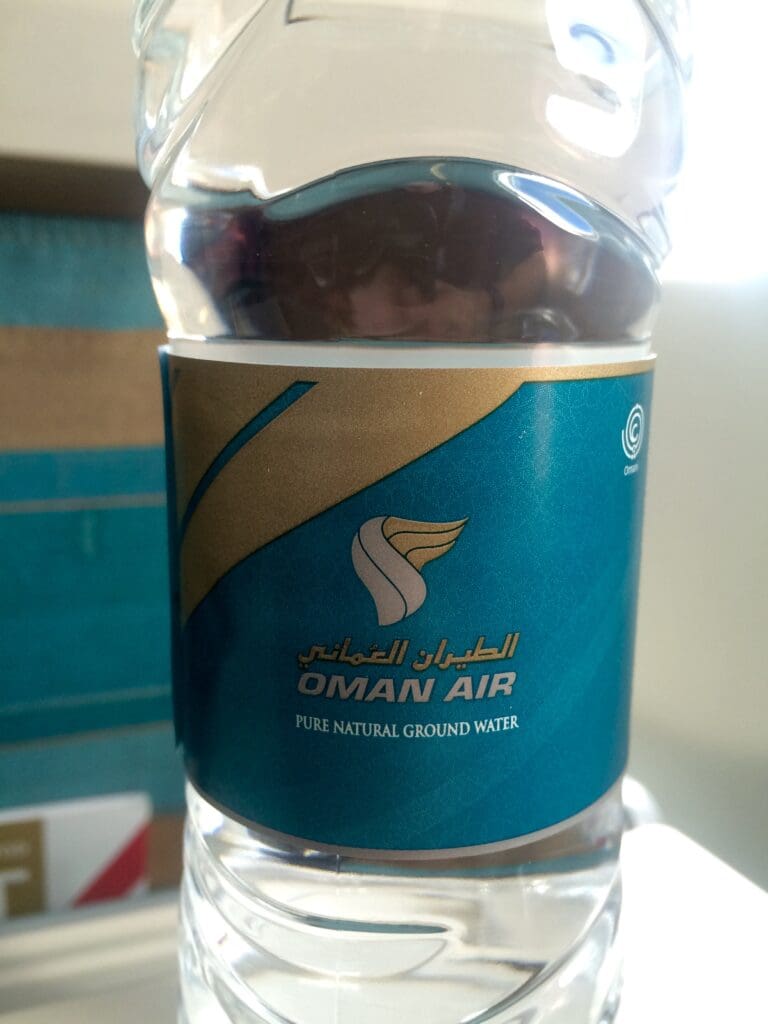
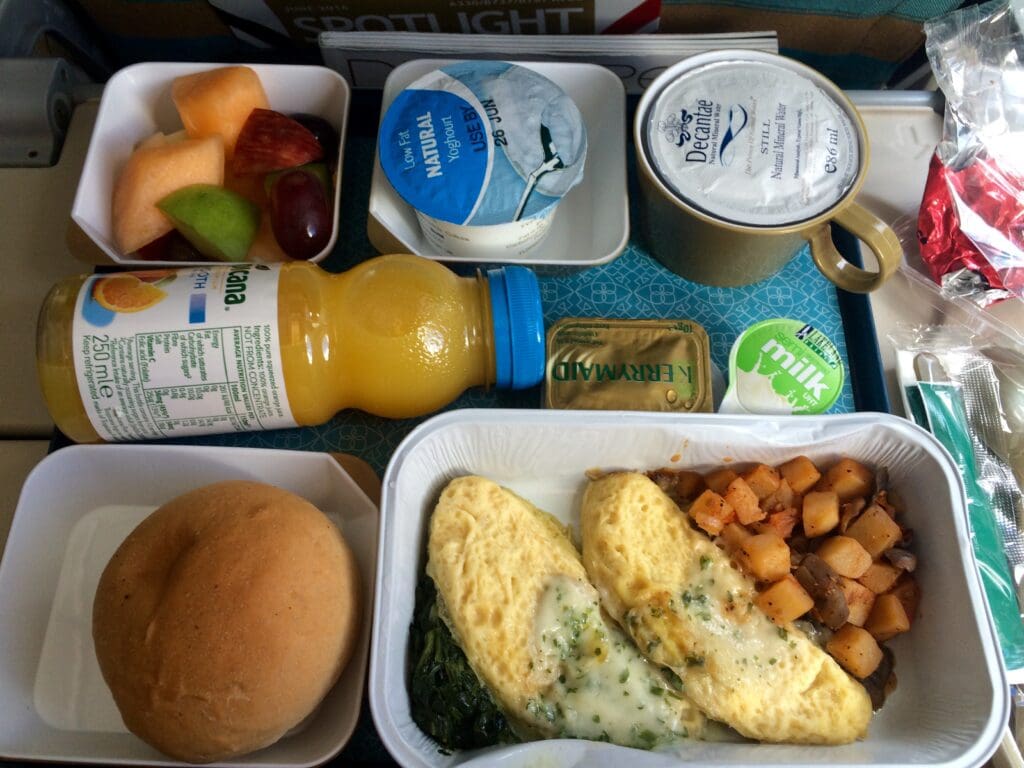
As we cruised southeastwards over Europe, the continent seemed to be shrouded in cloud that day and thus there was nothing to be seen. After playing around with the inflight entertainment system and making a quick toilet trip which brought with it no issues, I decided to have a nap and by the time I woke up, the aircraft was nearing Turkey’s northern coastline. As we crossed the shoreline, the clouds parted and revealed a superb view of the mountainous landscapes at the eastern end of the country, followed by those of Iran once we had crossed the border. Inside the cabin, the lights remained dim for much of the cruise, although thankfully, the crew members did not pass around enforcing passengers to close their window blinds.
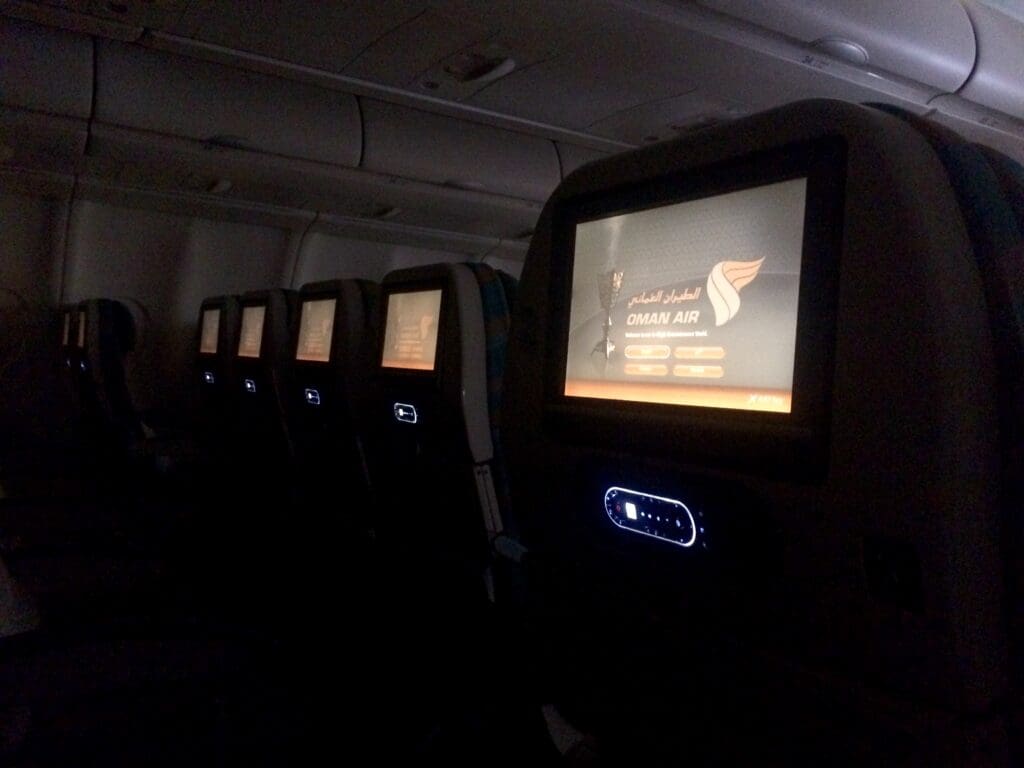
High above the picturesque mountains and canyons of Iran, the cabin crew took to the aisles once again and undertook the second round of service. As on most flights between the UK and the Gulf, Oman Air offers both a meal and a lighter snack and the latter came in the form of Monty’s hot wraps. Going for the chicken option, a piping hot Portuguese chicken wrap was handed over to me along with a serviette and a bottle of still water, with this service shortly followed by a full round of drinks.
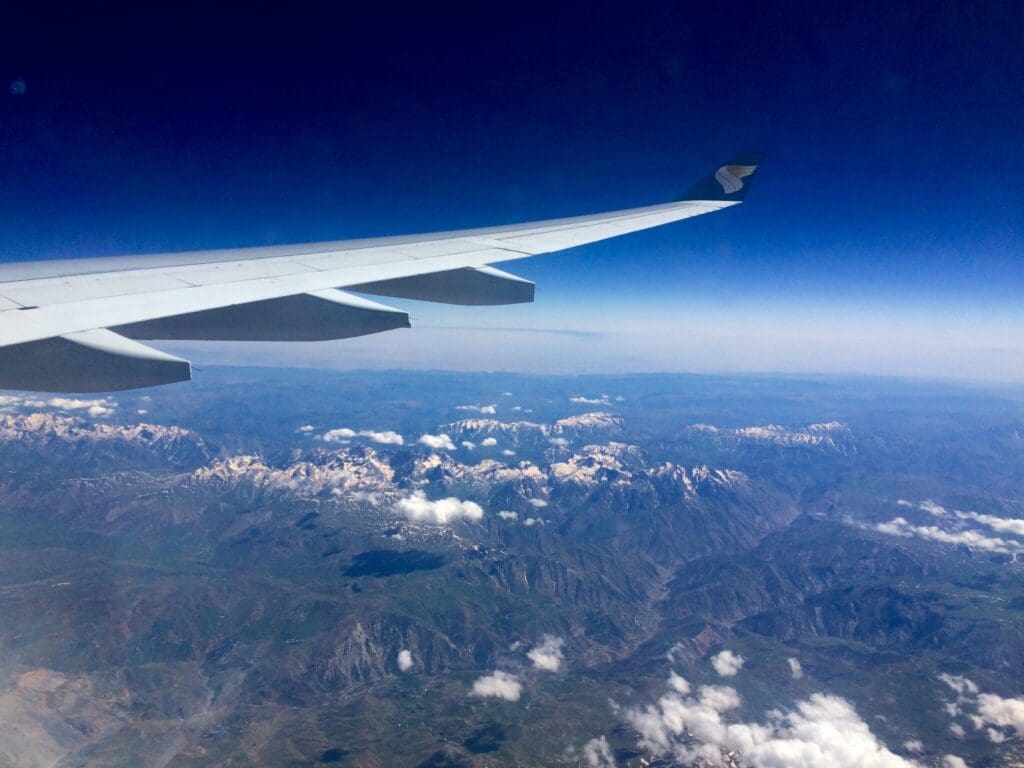
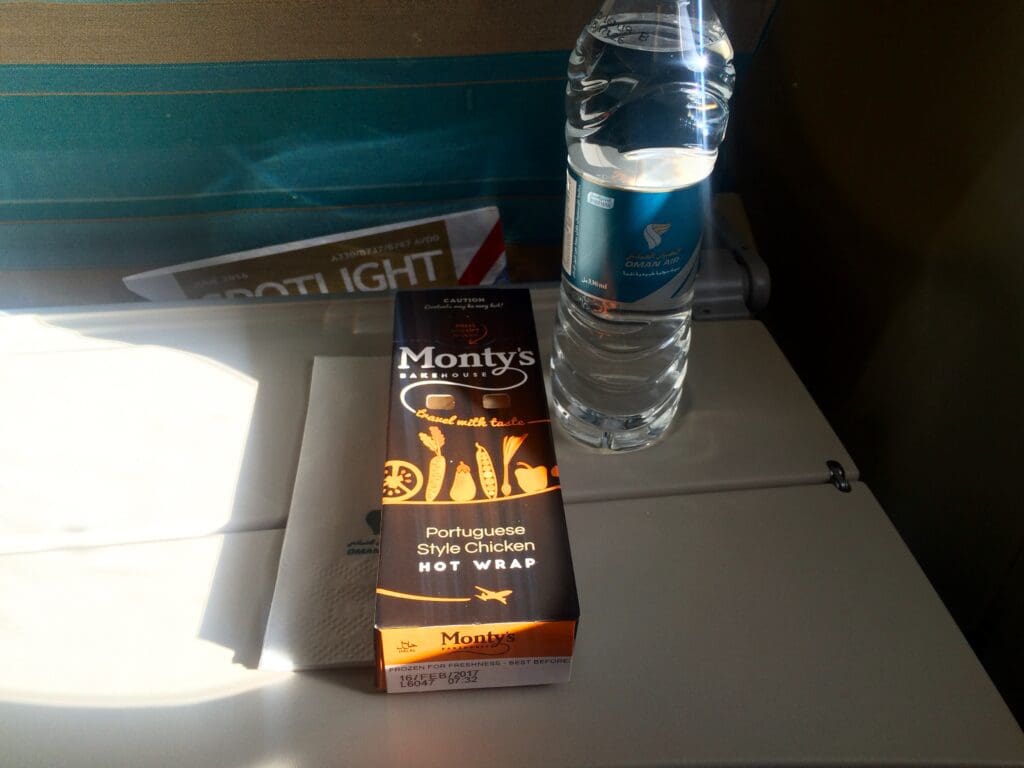
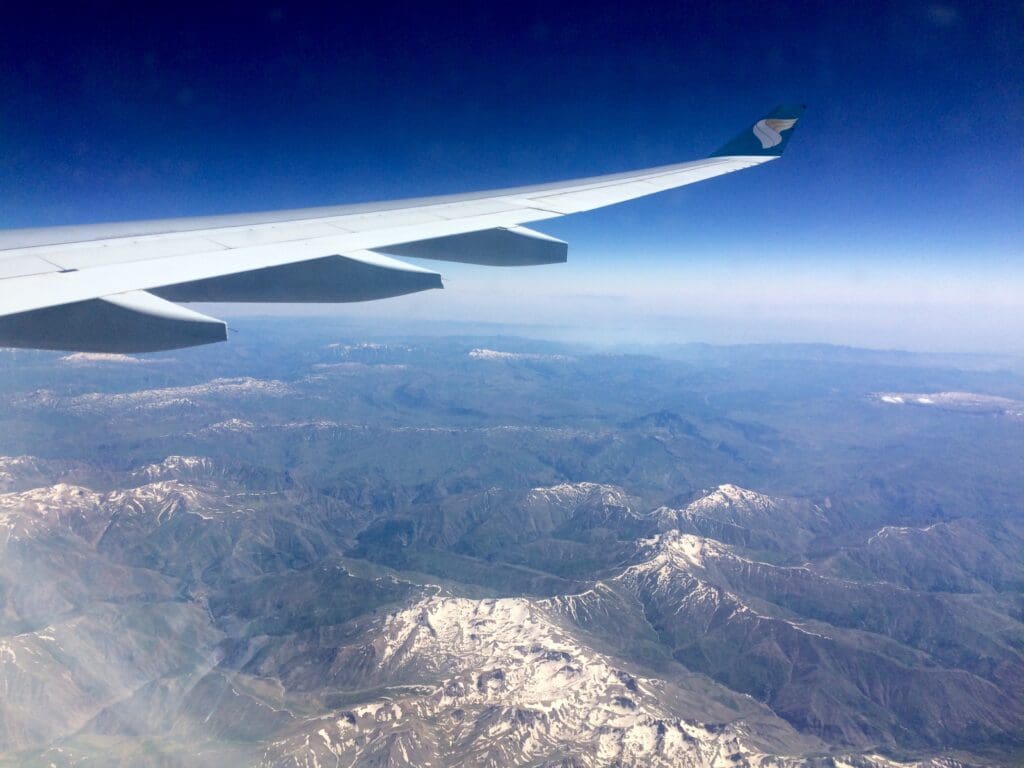
Cruising southwards, the landscapes turned to deserts as we flew over Southern Iran before heading out over the Persian Gulf. Following a quick crossing of the waters between Iran and the United Arab Emirates, the aircraft passed over the coastline of the Emirate of Sharjah, and sitting on the right hand side of the aircraft I was treated to a wonderful view of Dubai – there both the Palm Jumeirah and Palm Jebel Ali could be easily seen. However, just as quick as they appeared, the sprawl of Dubai was replaced by the sandy deserts which soon transformed into tall mountains as we crossed over into Oman’s airspace.
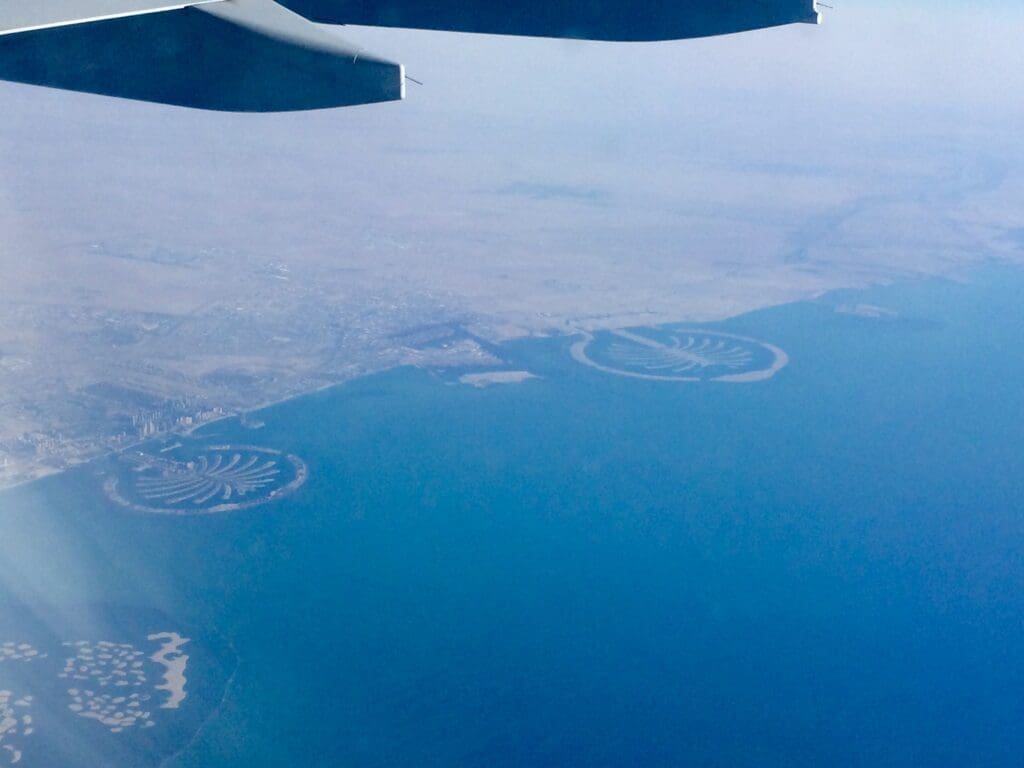
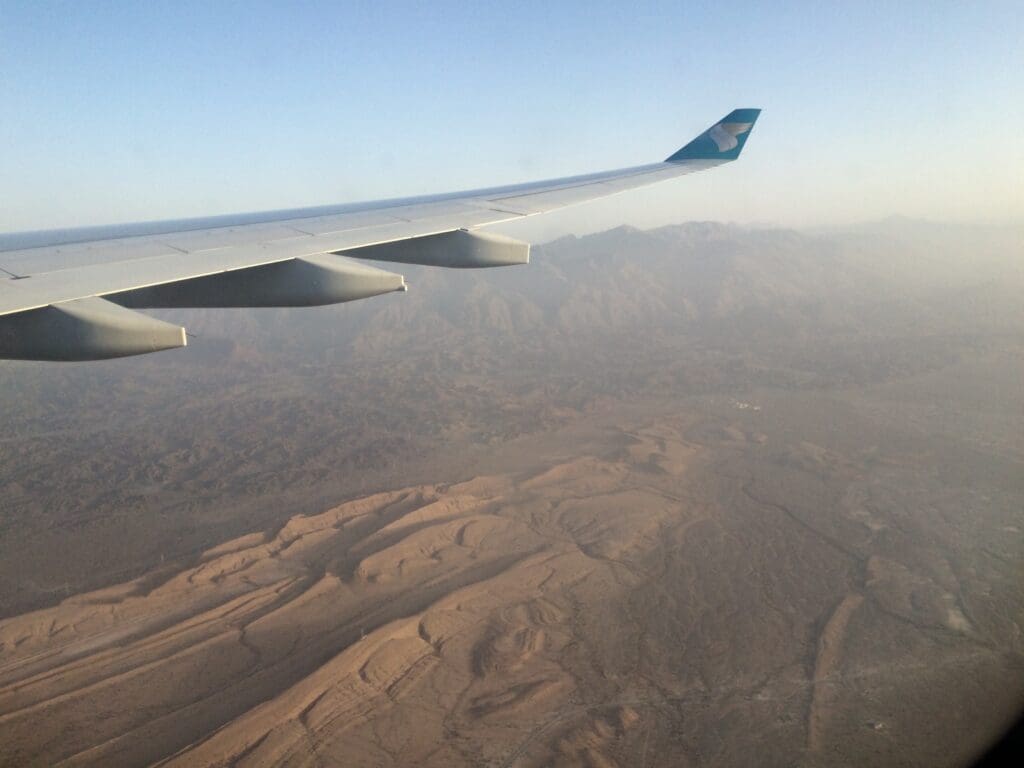
Almost immediately after crossing the border, the Airbus could be felt sinking downwards at which point the crew passed through the cabin collecting any more rubbish that had accumulated, before making another pass to check everything was secure once the seatbelt signs had been illuminated. With my eyes glued to the impressive landscapes which convinced me to put Oman on my travel bucket list, before I knew it the flaps were being extended as we sped towards Muscat Airport.
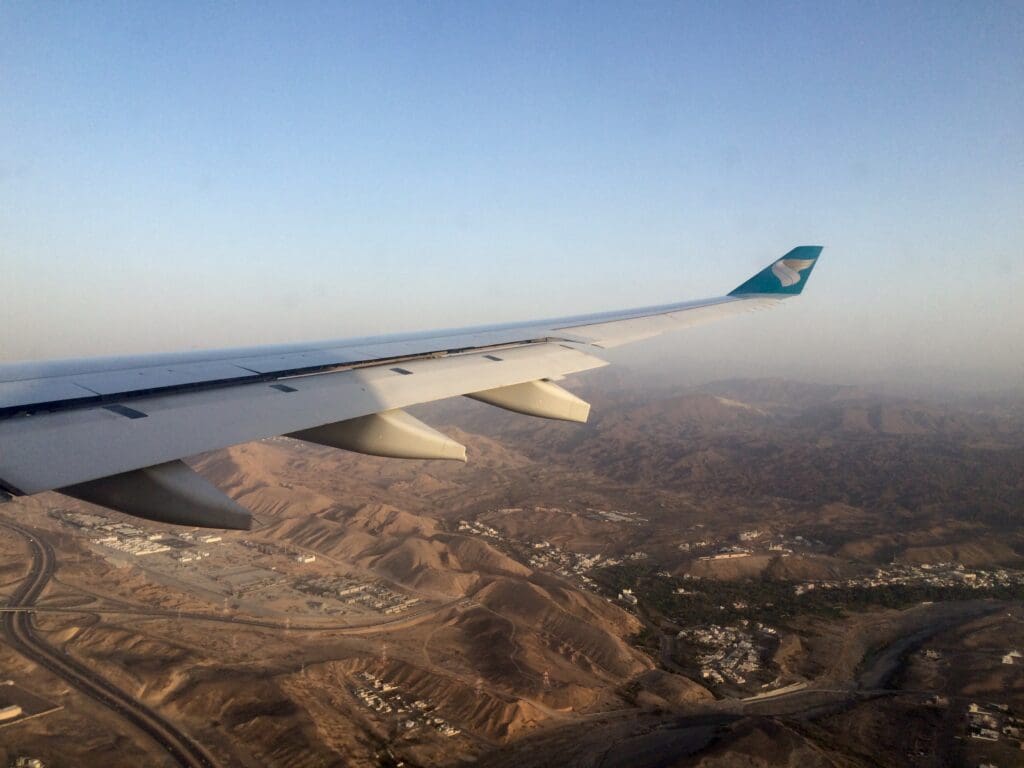
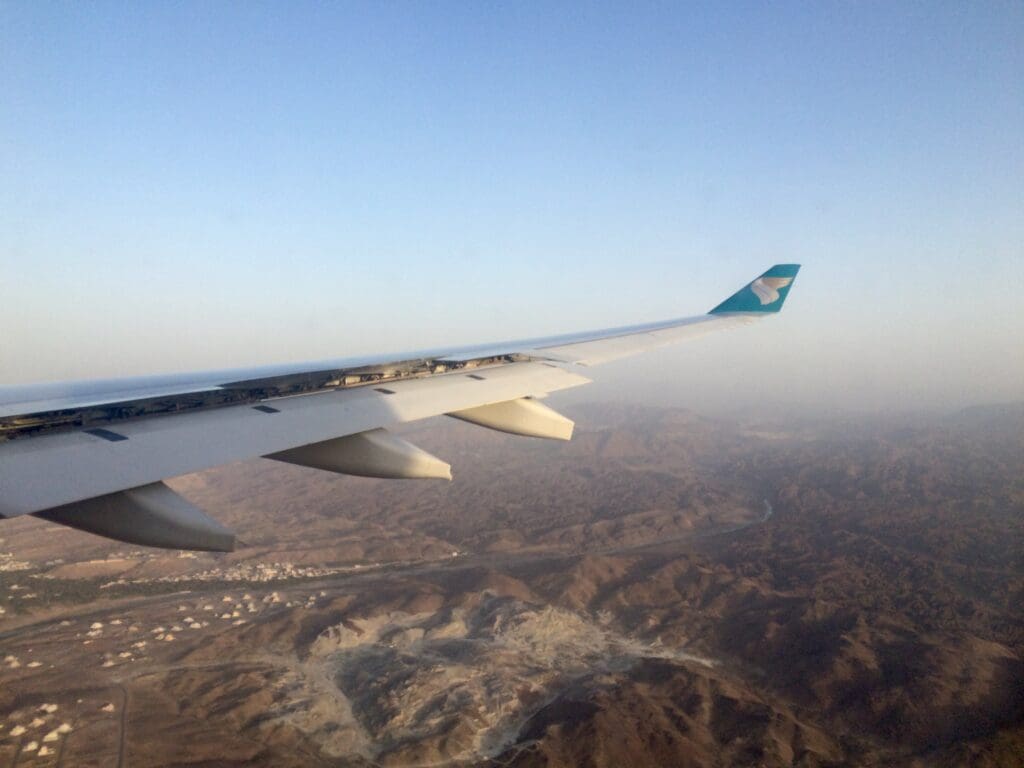
Once the landing gear had been extended, I watched the forward facing camera as we sank over the low-rise buildings of the suburbs that neighbour the airport before crossing over the airport’s perimeter fence and gently touching down on Runway 08L at 1824. Once on the ground, the aircraft decelerated with vigour as if needing to exit the runway as soon as possible and the new terminal popped into view which would end up opening its doors a little under two years later.
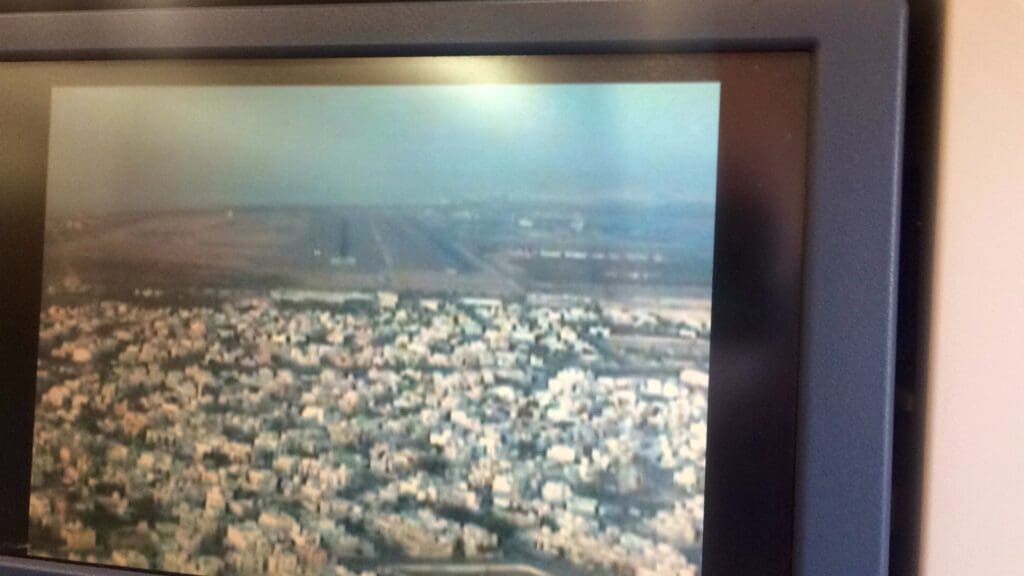
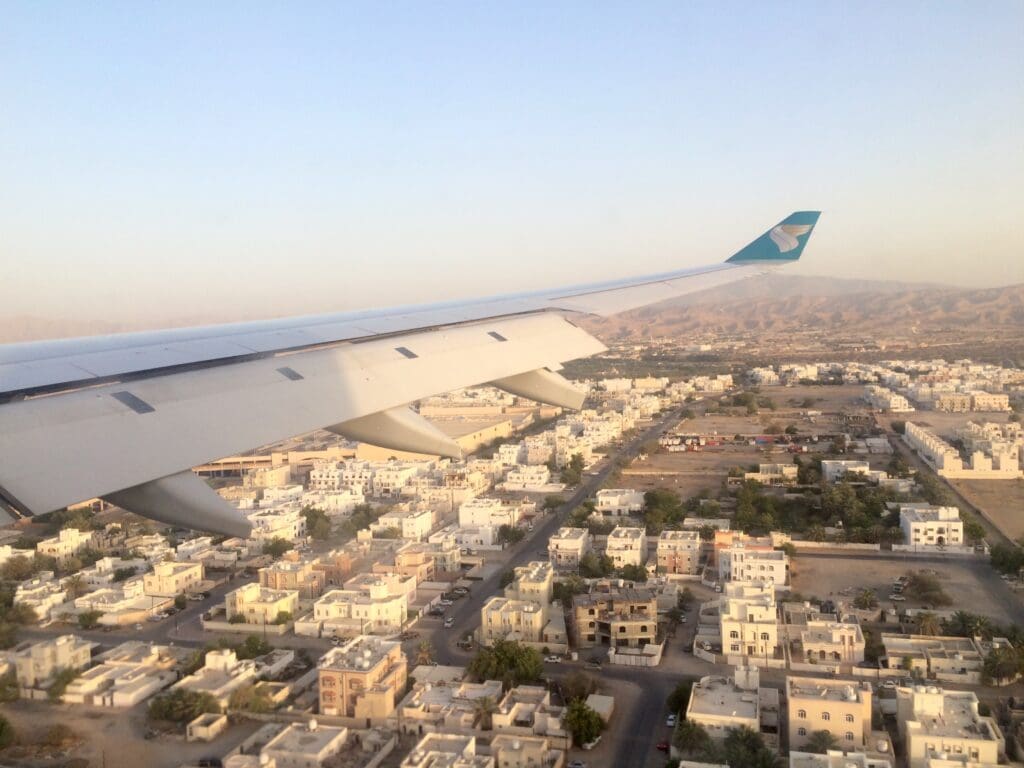
In the usual manner, an announcement was made as we left the runway welcoming all to Muscat, thanking passengers for flying with Oman Air and asking all to remain seated for the time being. Touching down well ahead of our scheduled arrival time, it took quite a while to arrive at the remote stand and upon pulling into this an army of staff and several buses could be seen waiting to shuttle passengers over to the terminal building. Meanwhile, the aircraft came to a halt next to the Dreamliner that would take many of those onboard over to Bangkok in a few hours’ time.
As soon as the engines spooled down, the army of staff outside got to work and it wasn’t long before disembarkation commenced. Given the lack of passengers, this was a quick affair and I soon thanked the flight attendants before heading out into the boiling hot evening air. Highlighting just how empty the flight had been, almost Economy passengers were able to squeeze into a single bus and we were shuttled over to the terminal building. Once there, I headed up into the rather unspectacular arrivals area and I joined a long yet fast-moving queue to have my passport and boarding pass checked before I was able to enter the airside departures portion of the terminal.
Walking around, I found Muscat Airport’s terminal to be small, dated and definitely not particularly spectacular. Indeed, it was clear that Oman Air required a new and updated terminal if they wished to continue to expand and develop their hub-and-spoke model. Outside, aircraft ranging in size from the small Embraer 175s to large Boeing 787s could be seen heading off to destinations across Asia and Europe and after wandering around I decided to head over to Gate 22. With passengers able to enter the gate area at 2000, after having my boarding pass scanned and passport checked, I took a seat and waited for this to get busy. Much to my delight, this remained far from crowded and a good number of empty seats remained as we neared the scheduled boarding time indicating that it would be a quiet ride over to Thailand.
At 2020, boarding began and soon I made my way outside and boarded the air conditioned bus. Being one of the first to board this, around five minutes of waiting was required before the doors slid closed and we were driven across the apron and over to the Dreamliner that was bound for Bangkok. At the time of my flight, Oman Air operated a grand total of four Boeing 787-8 Dreamliner aircraft. Two of these had been delivered directly from Boeing, whilst the other two had initially operated for Kenya Airways and were being dry-leased to Oman Air. That evening, I would be flying onboard A4O-SY, one of the leased examples that had previously flown for Kenya Airways under the guise of 5Y-KZH. This aircraft was assembled at Boeing’s plant in the South Carolinian city of Charleston and took to the skies for the first time in May 2015 before being delivered to Kenya Airways in October that year. However, its stay in Nairobi was to be short and less than five months later, the aircraft was repainted and its interior slightly modified before being delivered to Muscat.
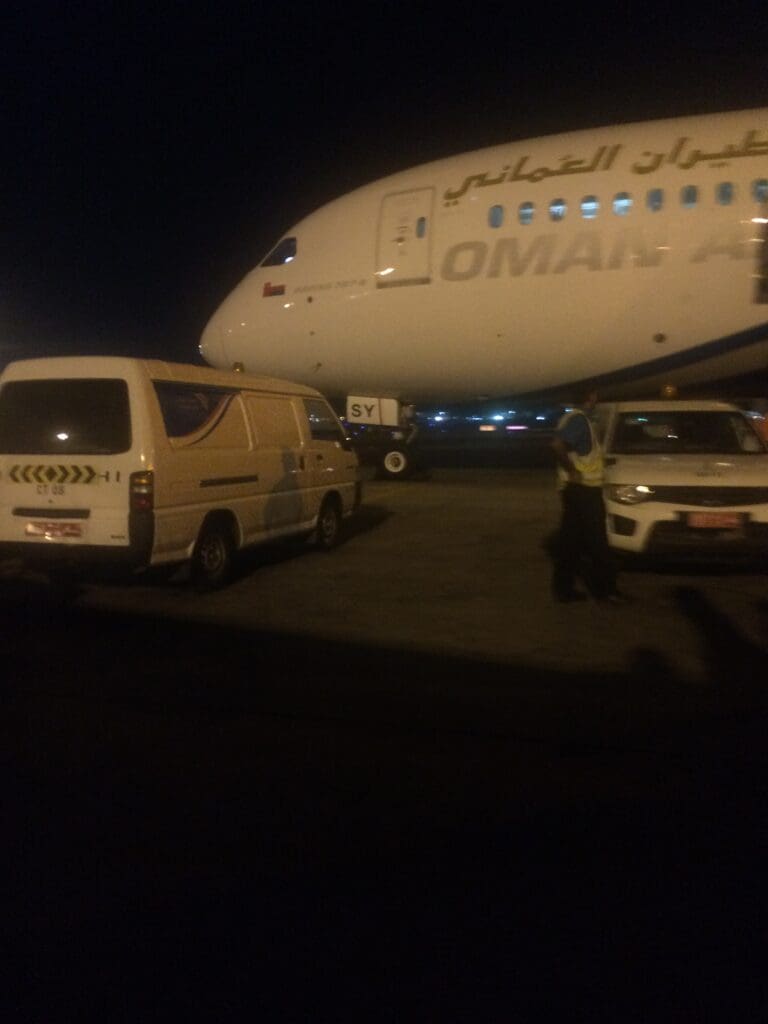
As soon as we arrived at the aircraft, the doors opened and I headed out into the boiling hot summer air. Whilst the sun had set, the temperature was still in the high thirties although thanks to the lack of humidity, this was bearable. With just one set of airstairs connected to the aircraft, I joined the scrum of passengers and waited for a few minutes before boarding via the 2L door.
Once again, once inside, I received a warm welcome as I stepped into the aircraft before I turned right and entered the cabin. First up was the smaller of the aircraft’s two Business cabins which consisted of two rows of the privacy-lacking lie flat seats, which I soon sped through before arriving in Economy. Being on lease from Kenya Airways, the aircraft retains its original configuration although the seats in Economy now sport Oman Air’s vibrant fabric covers. There, the seats were arranged in a 3-3-3 configuration and appeared to be comfortable and were topped with an adjustable headrest and antimacassars. Turning to the inflight entertainment screens, these were a little newer and of higher quality than those on the Airbus A330, furthermore, I was delighted to find that both the USB port and plug sockets worked throughout the flight.
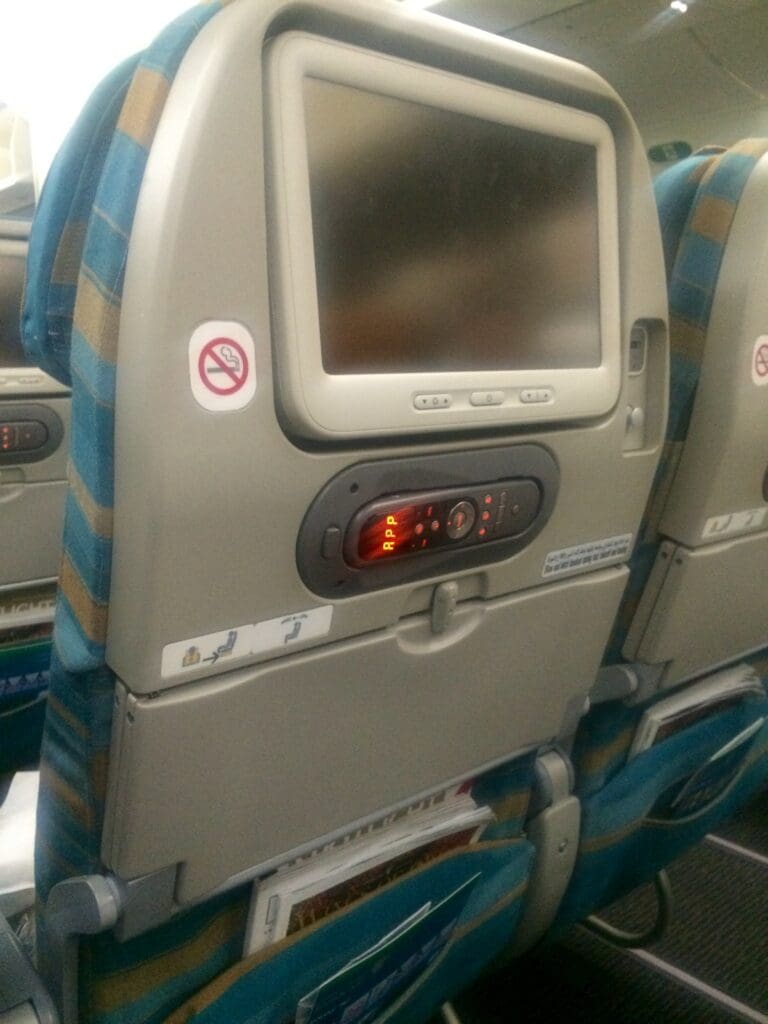
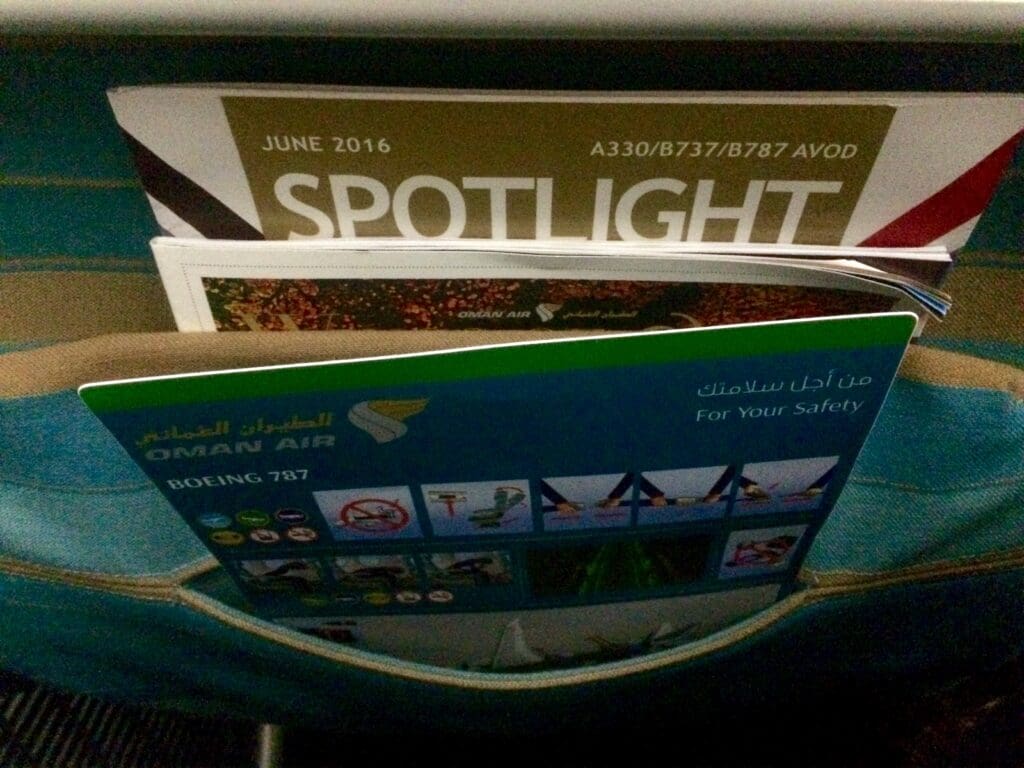
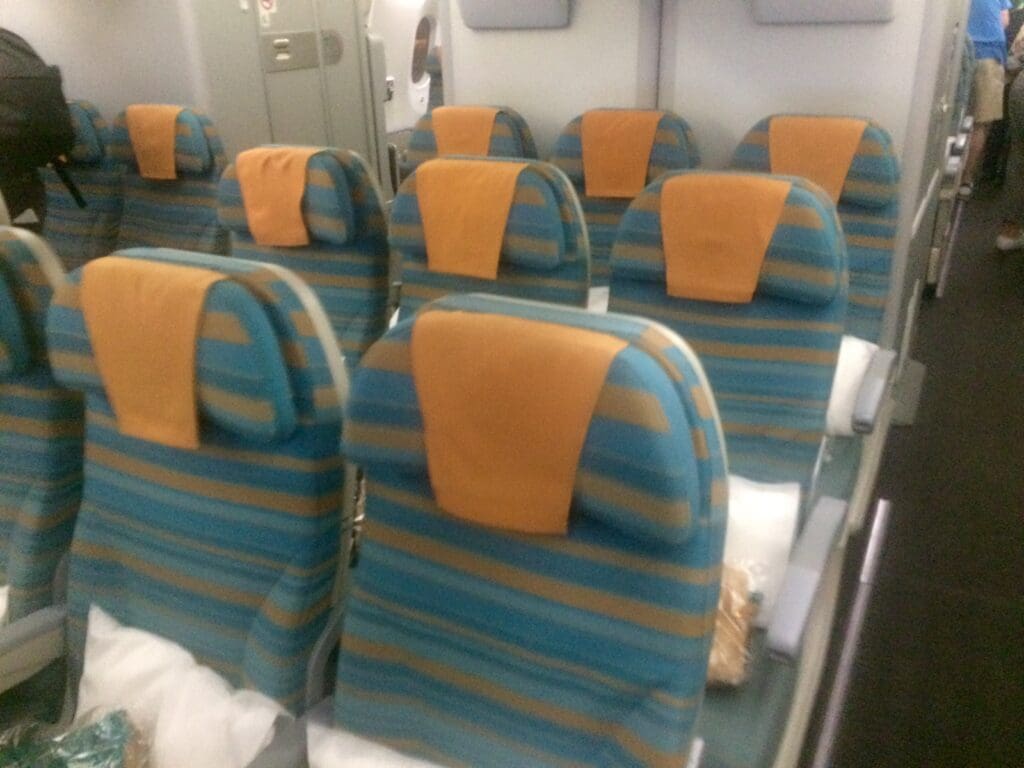
With all passengers making it to the aircraft on time, as I had hoped, once again I would be able to spread out as both neighbouring seats remained vacant. Being an overnight flight, both blankets and pillows had been placed on each seat prior to boarding although I was a little surprised to find that no amenity kit was provided on this leg. As our scheduled departure time neared, the cabin door was shut and the crew soon passed through the cabin ensuring that all was in place for our departure before the safety video took over the inflight entertainment screens. As this was underway, our two large General Electric GEnx-1B engines spooled and whirred into life, and several minutes ahead of schedule, we commenced our taxi to the end of the runway.
Departing from Muscat Airport’s Runway 26L, a fairly long taxi was in order and in line with standard procedures, the lights were soon turned off as we trundled over to this. After a while, the aircraft arrived at the end of the runway and without any holding, the two engines spooled up and we powered up into the skies of Oman. Soon turning around, the aircraft made a beeline for the Indian Ocean, and would not make landfall until reaching the shores of India.
Inside the cabin, as we climbed, the lights were soon switched back on and the Cabin Services Manager made their second welcome announcement although this time they did not go over the languages spoken by their team. Wanting to grab some sleep later on, at this stage of the flight, I decided to explore the inflight entertainment system. This was a little sleeker in its layout and more responsive than the system onboard the Airbus A330, and as expected, this featured all the same content. However, unfortunately there were no cameras and the moving map did not work for the duration of the flight.
Once in the air, it wasn’t long before the scent of warming food filled the cabin indicating that we were to be served an evening meal. Around forty minutes into the flight, Oman Air’s Desi Munch was handed out once again and a round of drinks was made. This was followed around twenty minutes later by the evening meal with the option of chicken or beef provided. Following some deliberation, I decided to go for the chicken. This turned out to be a slightly sweet chicken curry/stew, a potato salad, a fruit mousse sponge for dessert and a bread roll. Soon getting to work, this was of reasonable quality and left me with no major complaints and once finished it wasn’t long before a flight attendant came to remove my tray.
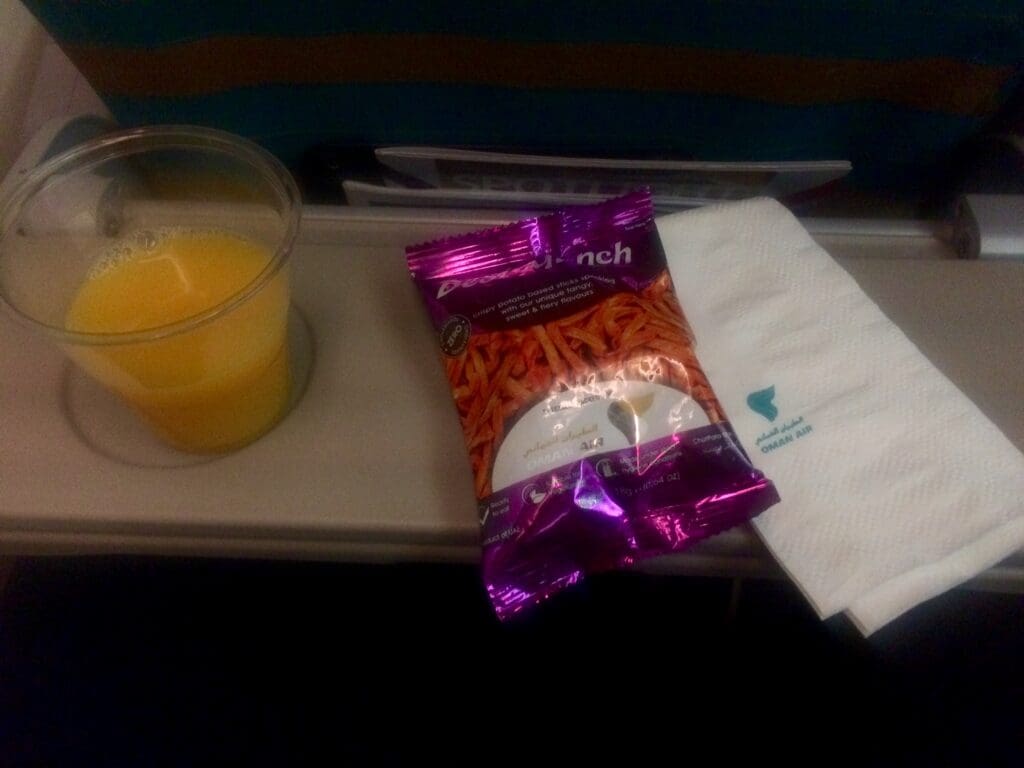

Being a short overnight service, unsurprisingly once trays had been collected, the lights were dimmed. Making use of the two vacant neighbouring seats, I decided to make an Economy class style bed and I drifted off to sleep for a good three hours or so, only waking up thanks to the occasional bout of turbulence over India. Once back over the Indian Ocean, the Dreamliner sped towards Southeast Asia and it wasn’t long before the lights were reilluminated. Seeing as it had only been three and a half hours or so since I had had the evening meal, I wasn’t particularly hungry although I did not pass on the second round of service which consisted of a delicious chicken sandwich which I decided to pair with a mango juice.
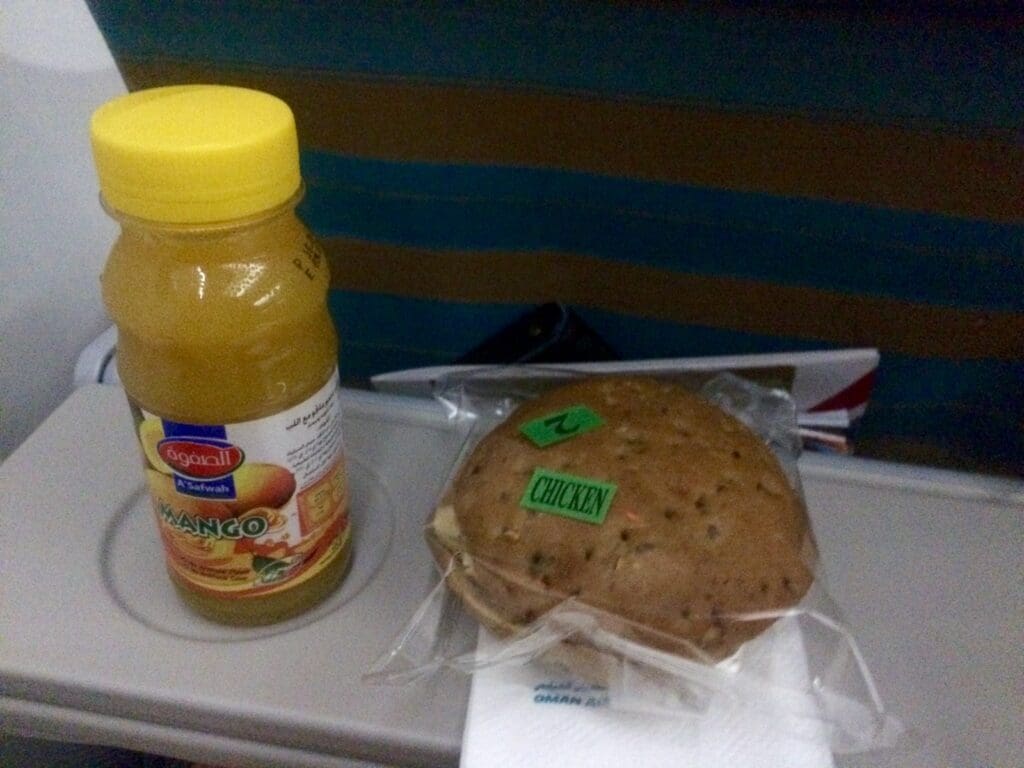
Once the pre-arrival snack/breakfast had been handed out, the cabin lights were temporarily dimmed before the Dreamliner’s rainbow moodlighting effect filled the cabin. Outside, I was treated to an impressive sunrise which lasted for the remainder of the flight. Before I knew it, the aircraft was in Thai airspace and the crew were making their final passes through the cabin collecting rubbish and beginning preparations for our arrival into Bangkok.
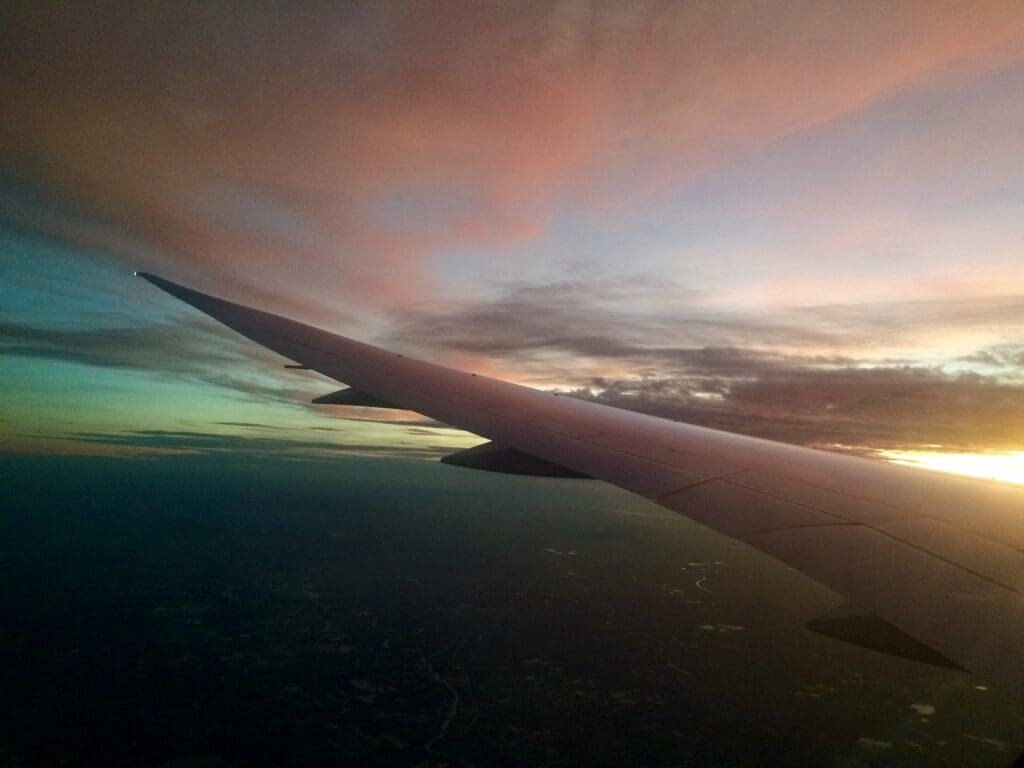
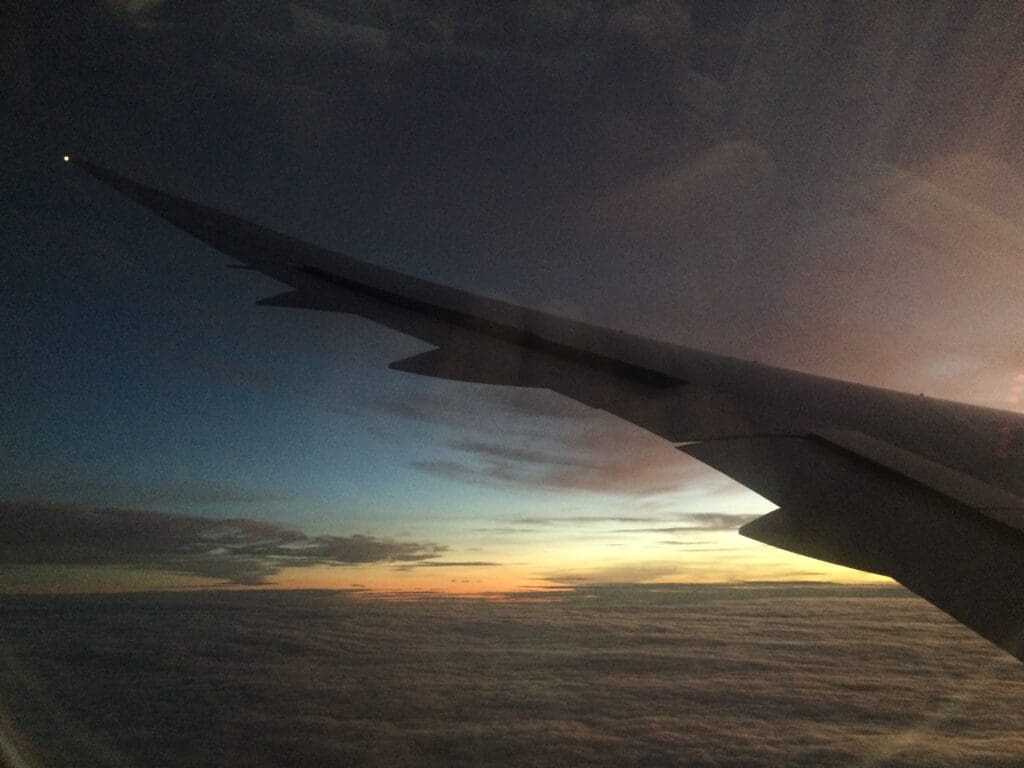
As we smoothly descended through the skies of Southeast Asia, the seatbelt signs were illuminated and the crew began the seemingly mammoth task of waking up the many sleeping passengers and ensuring that they were safely belted up. Following a few twists and turns, the aircraft lined up for an approach to Bangkok Airport’s Runway 19L and we sank over the mostly flat rural landscapes that surround Thailand’s capital city.
Before I knew it, the Dreamliner floated down over the perimeter fence and at 0555 gently touched down in Bangkok before decelerating rather gently. From the runway, the aircraft made a short taxi over to Stand E9 and once the engines had spooled down, disembarkation was a painless and quick affair, with there seeming to be no urgent rush amongst my fellow passengers to exit the aircraft. A few minutes later, I wandered up through the cabin, thanking the friendly crew members that had looked after me on this second leg before stepping off the aircraft and making my way up into the modern terminal building.
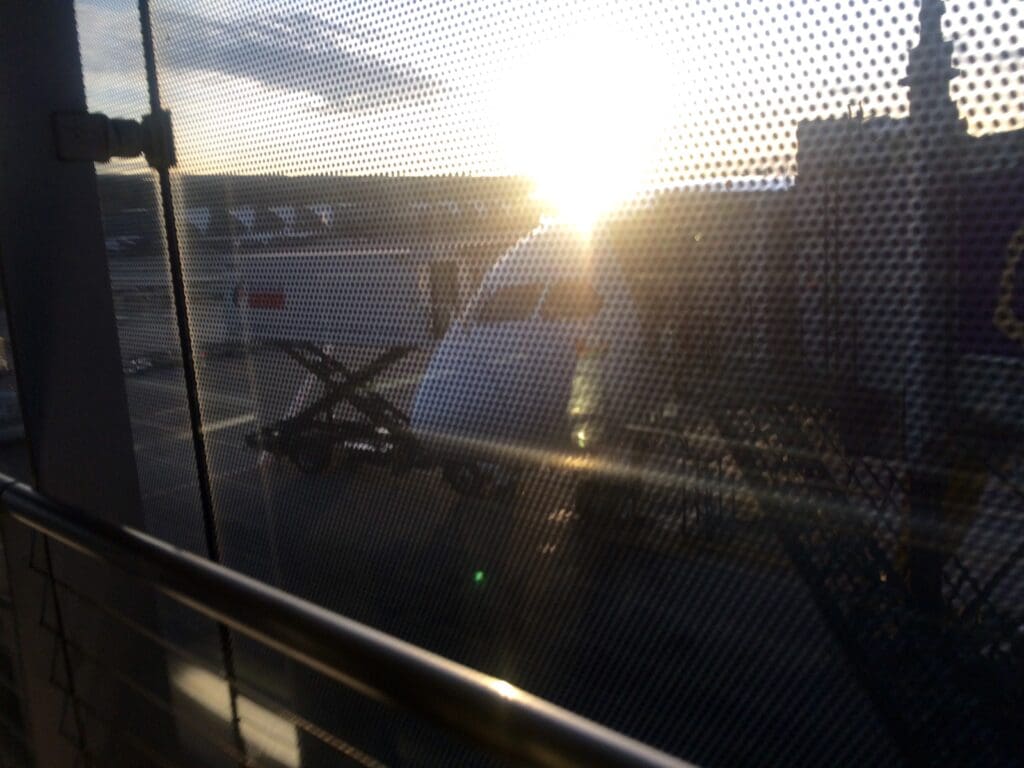
Summary
Despite having a few minor complaints here and there, overall, I was pleased with my first couple of rides with Oman Air and arrived in Thailand feeling rather satisfied with the carrier. On both flights, the seats were comfortable and the crew had been warm, polite and friendly, whilst the inflight entertainment systems were suitably entertaining and worked relatively well.

